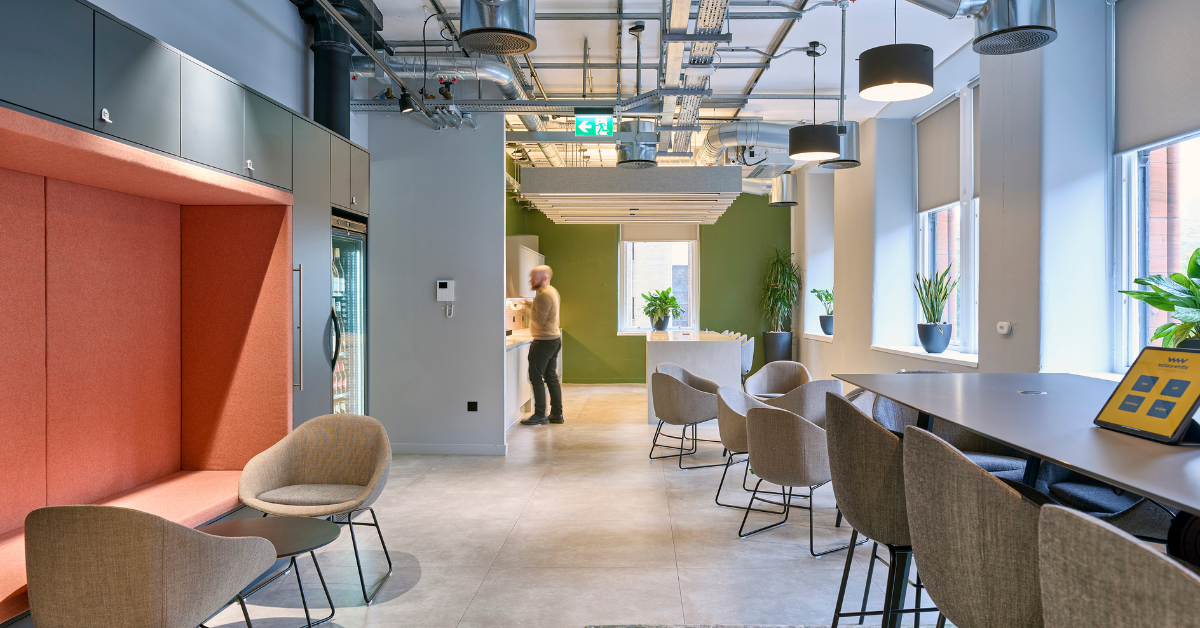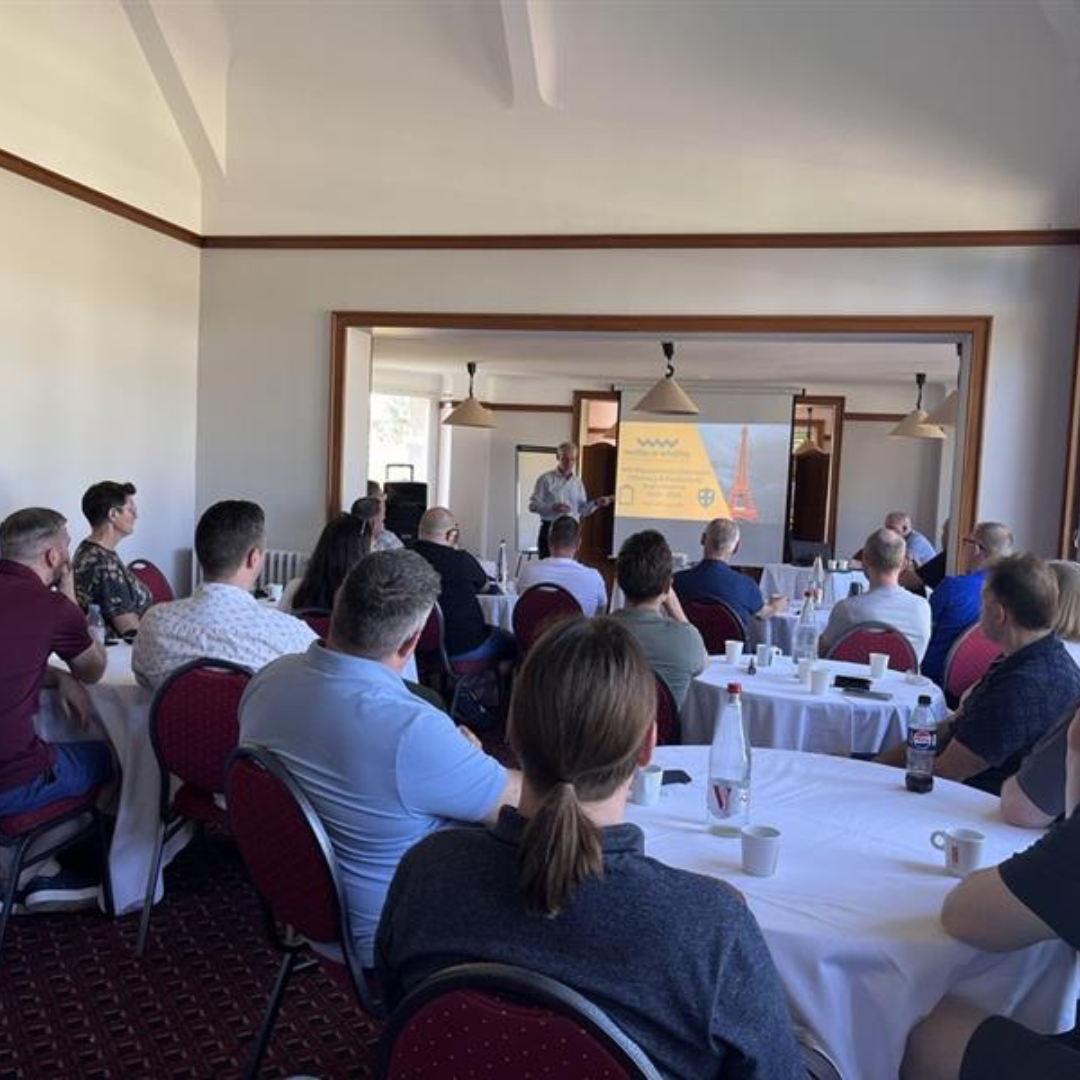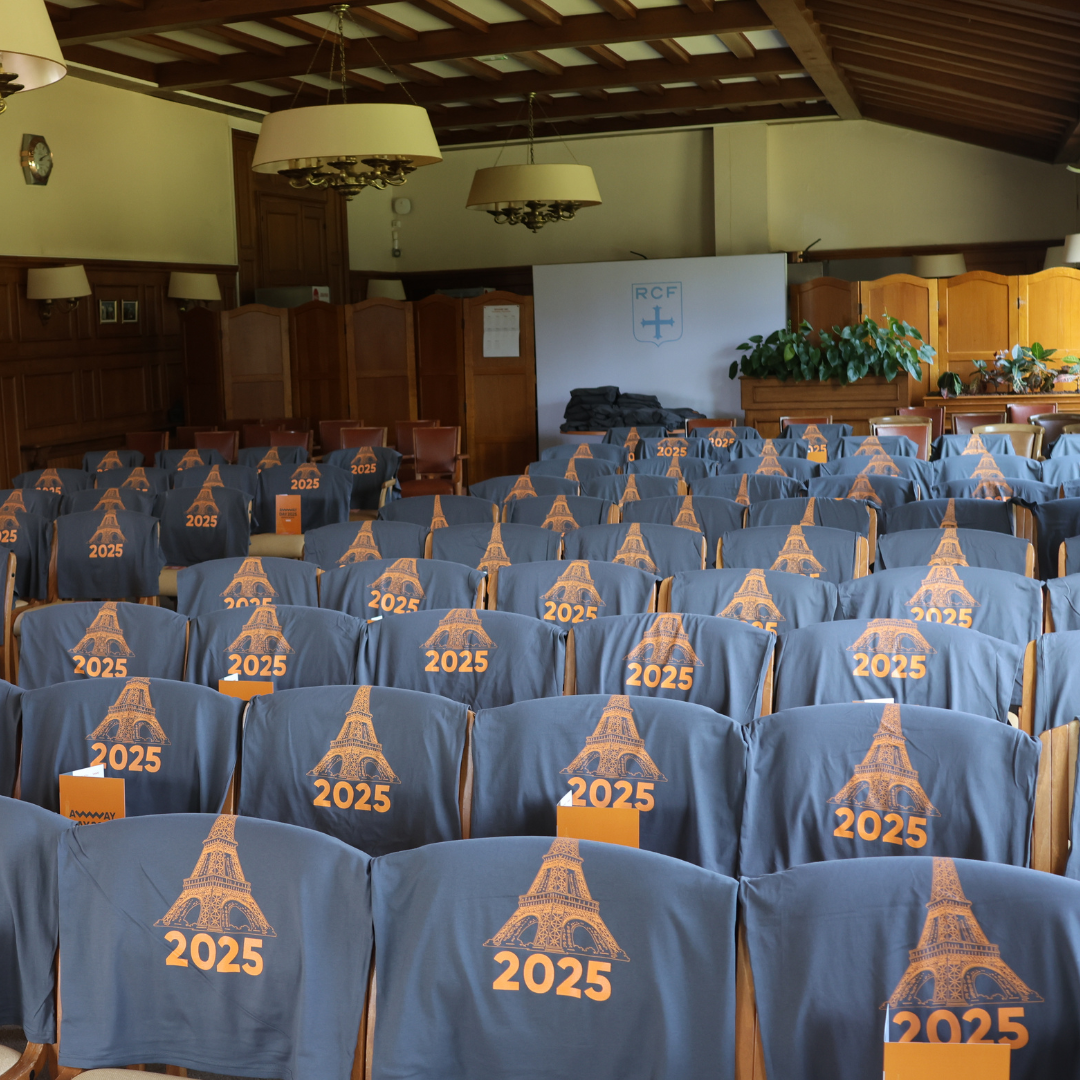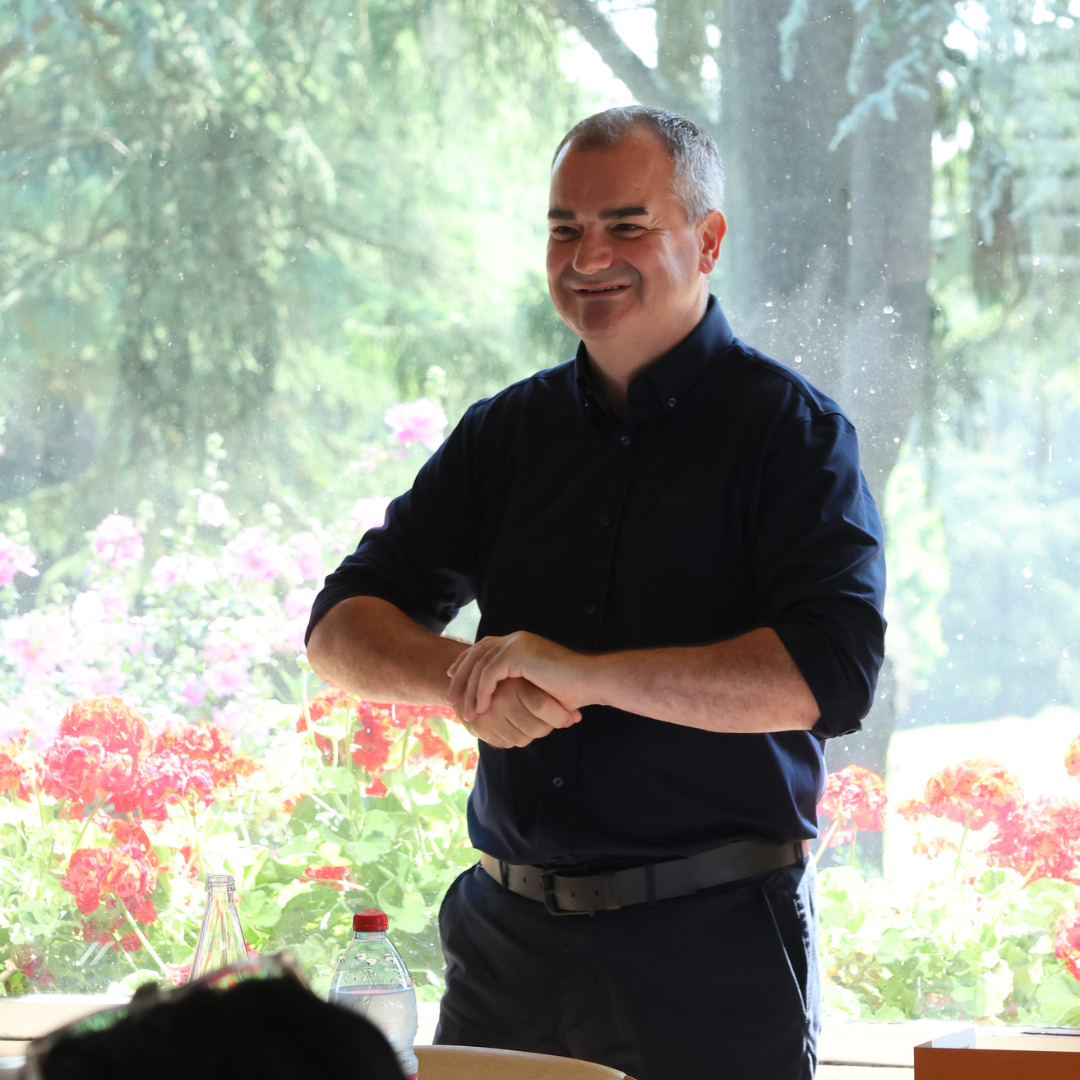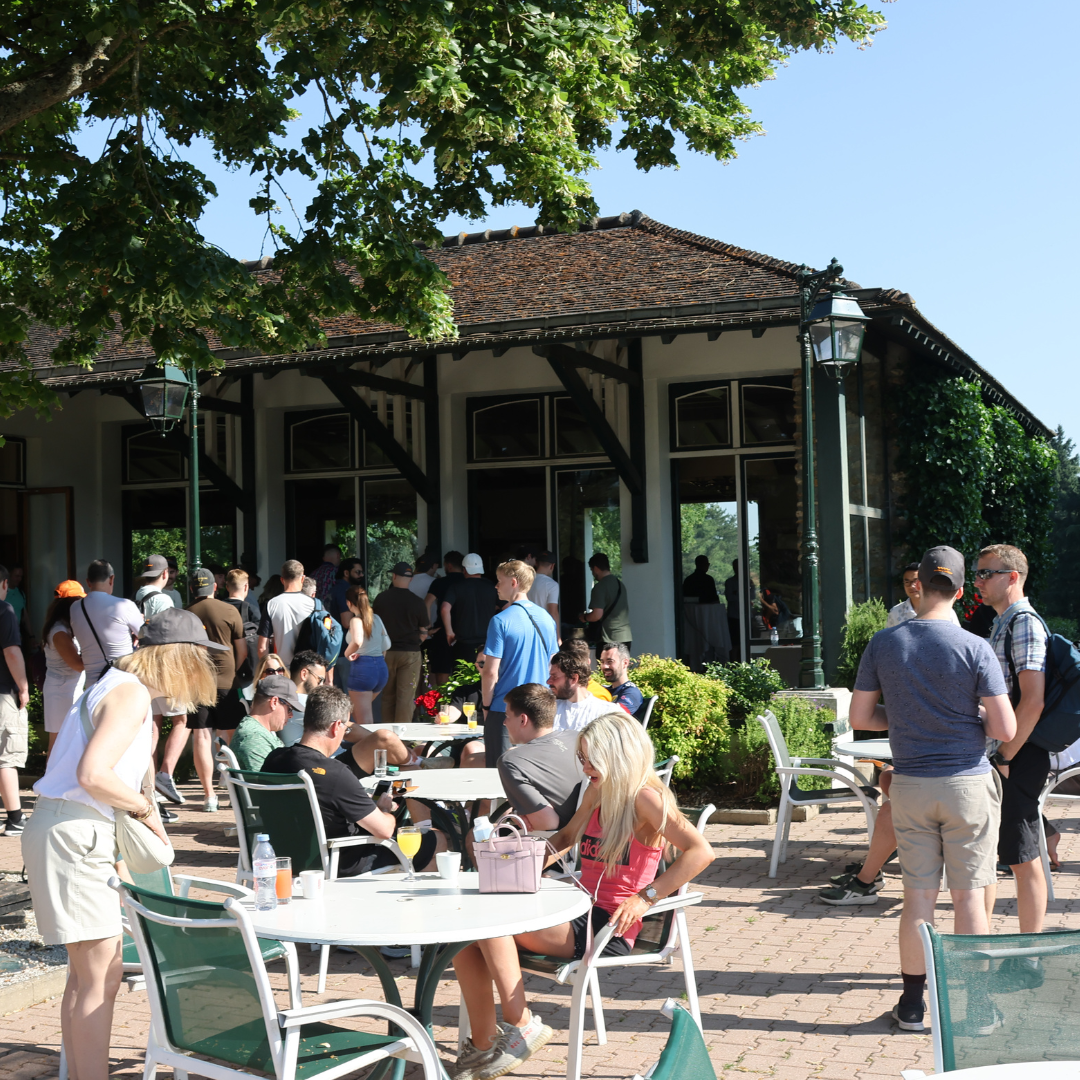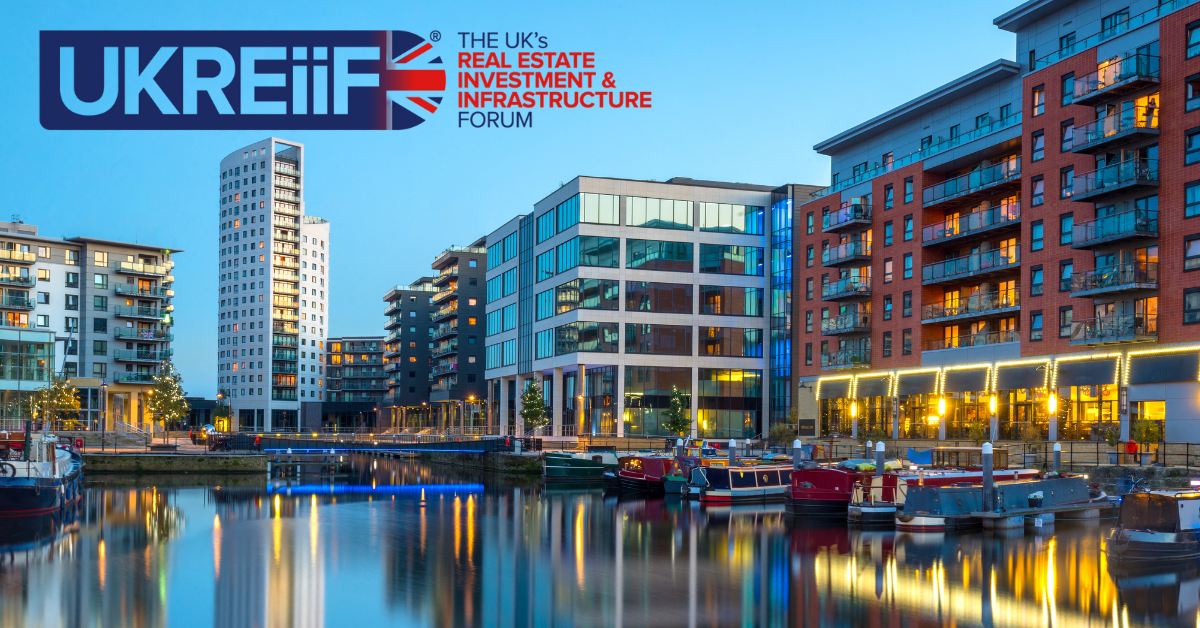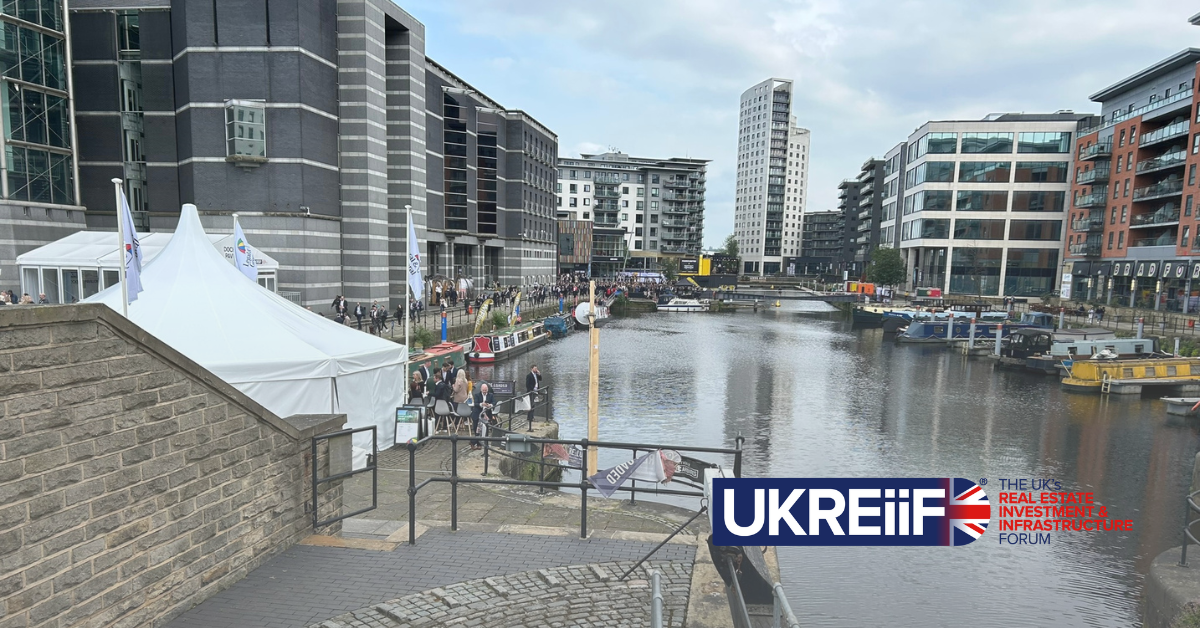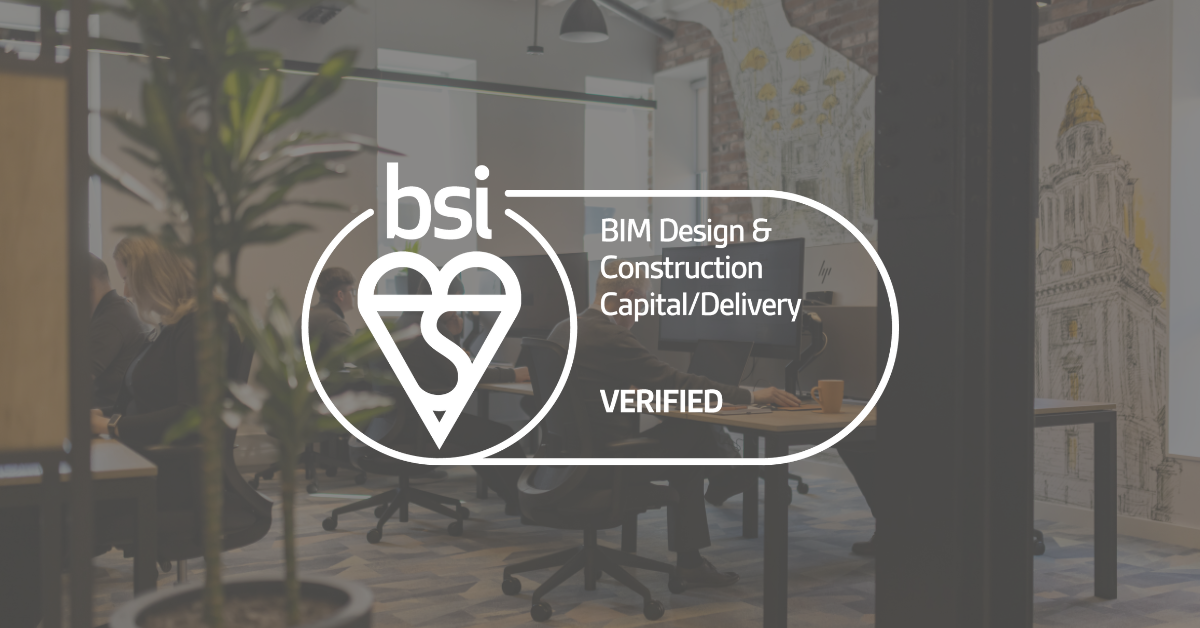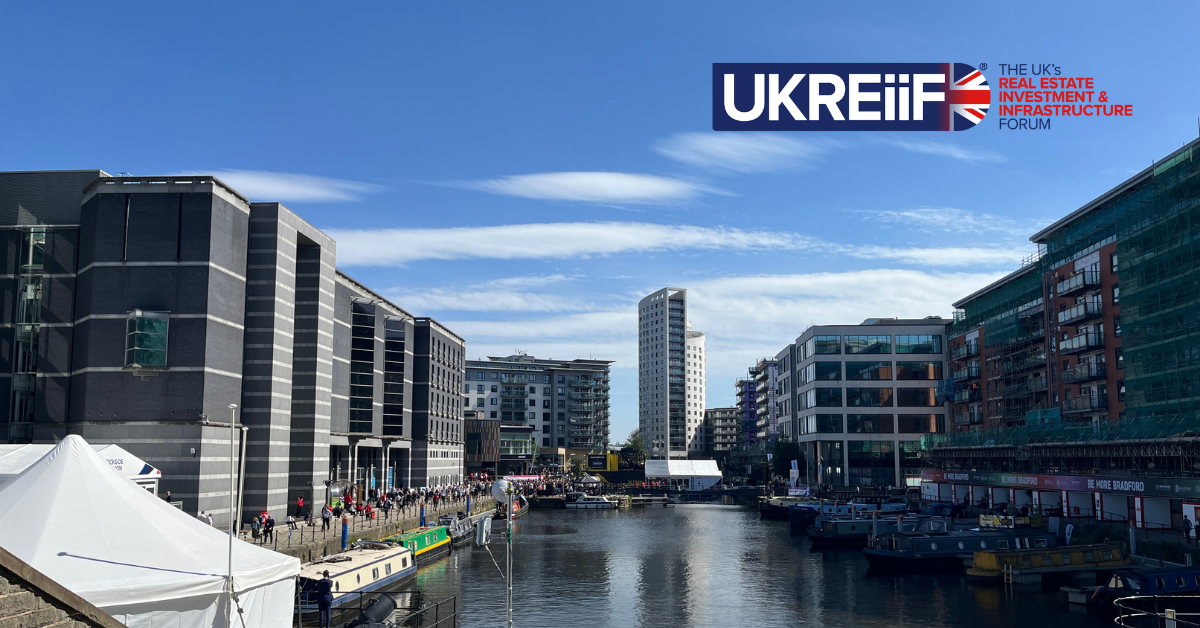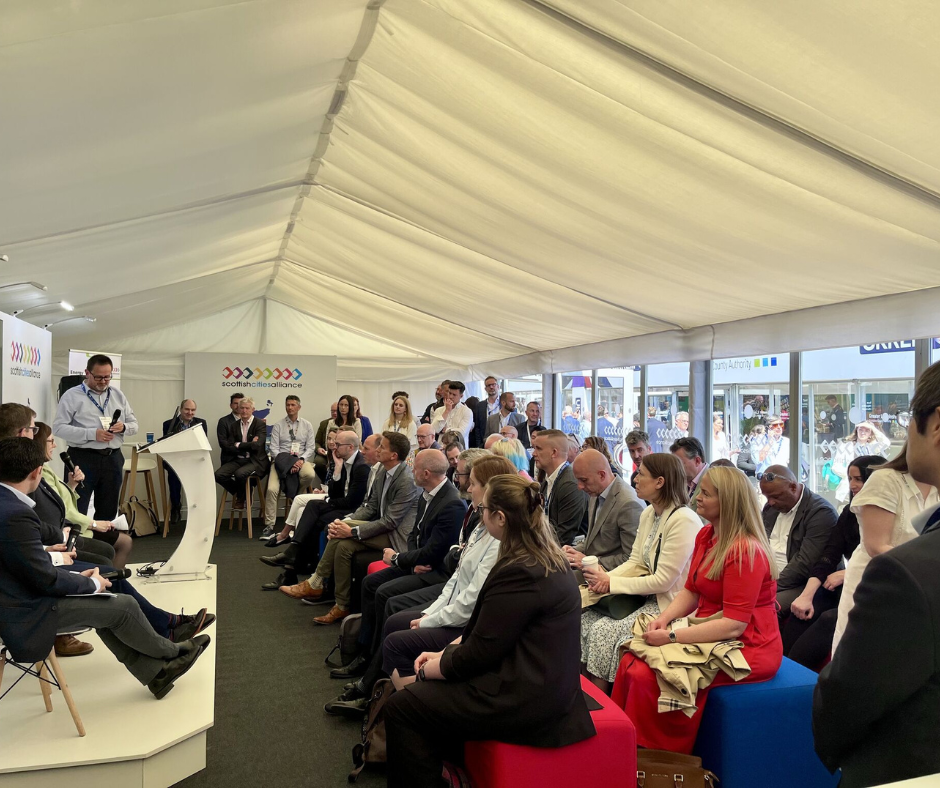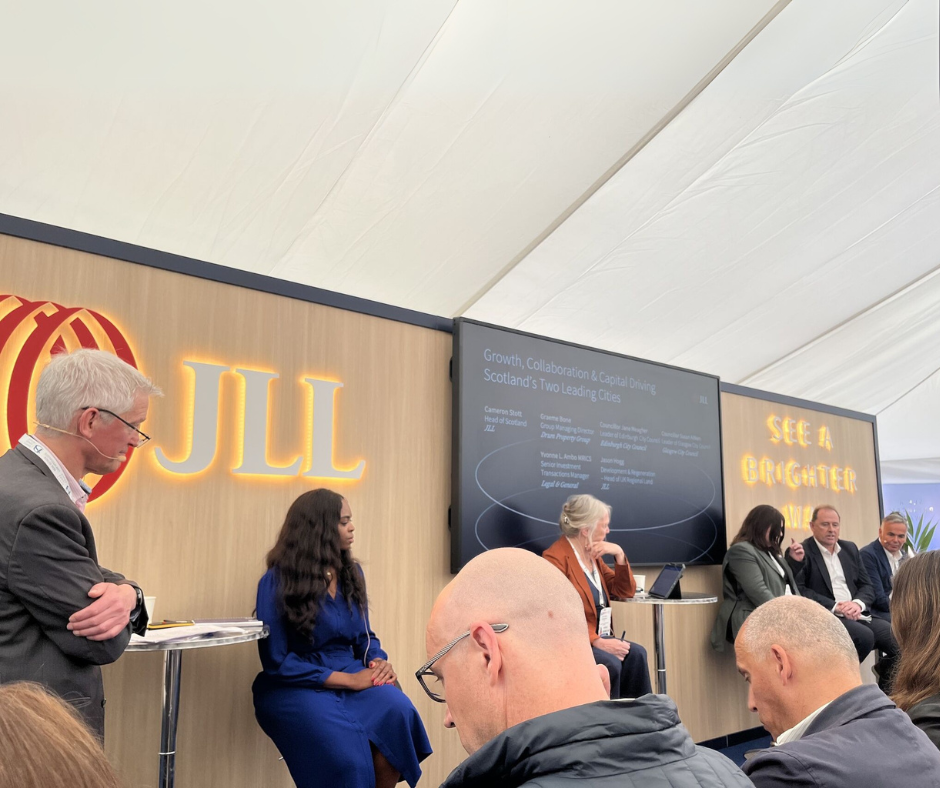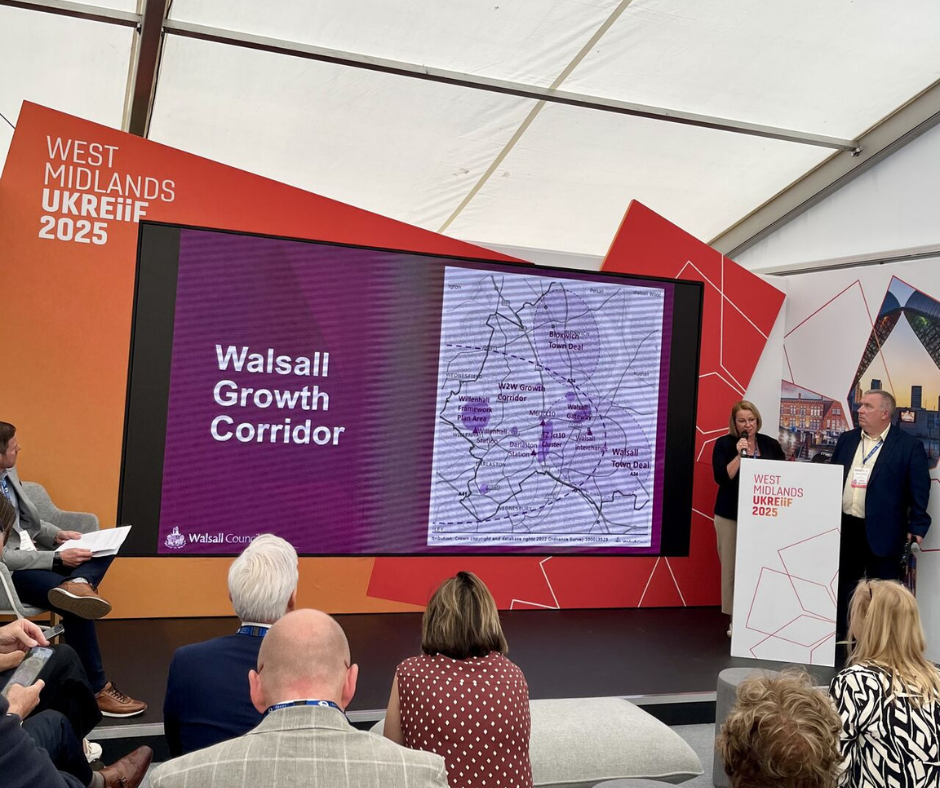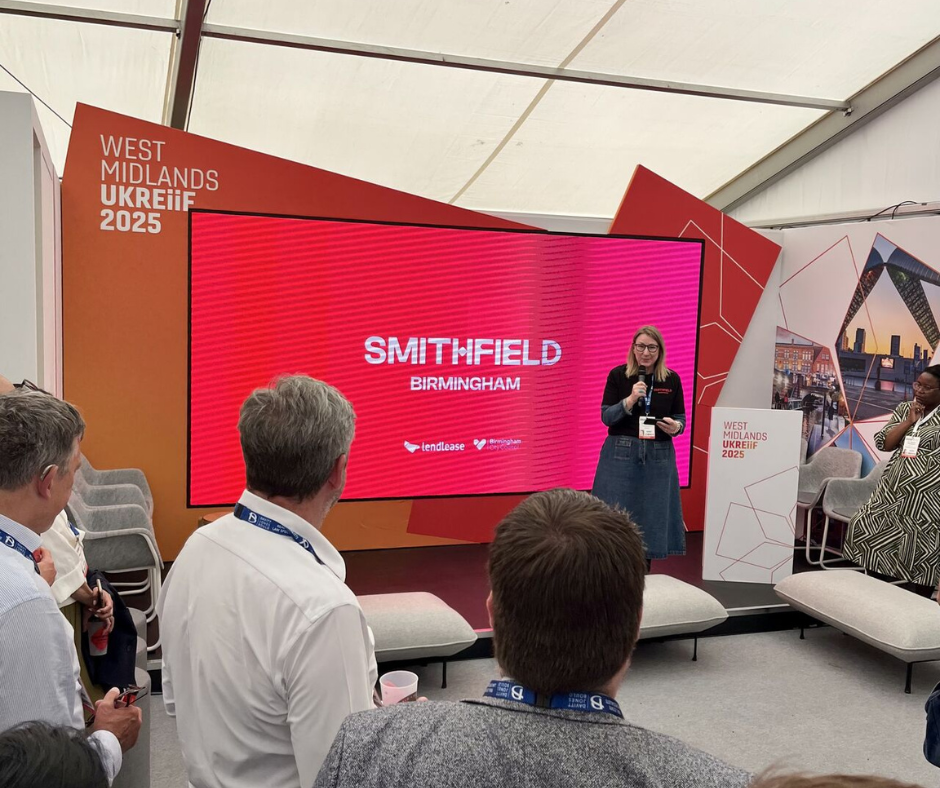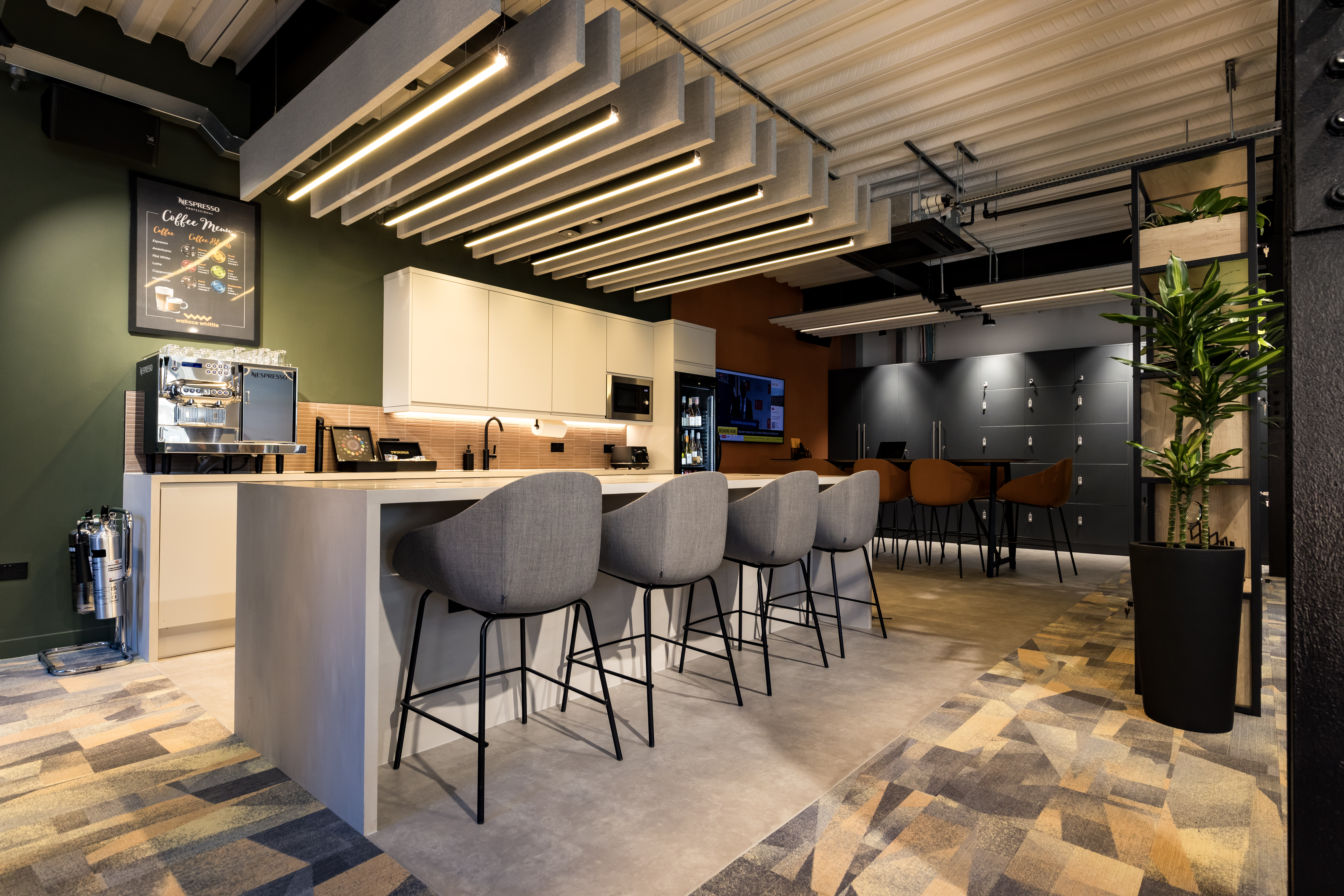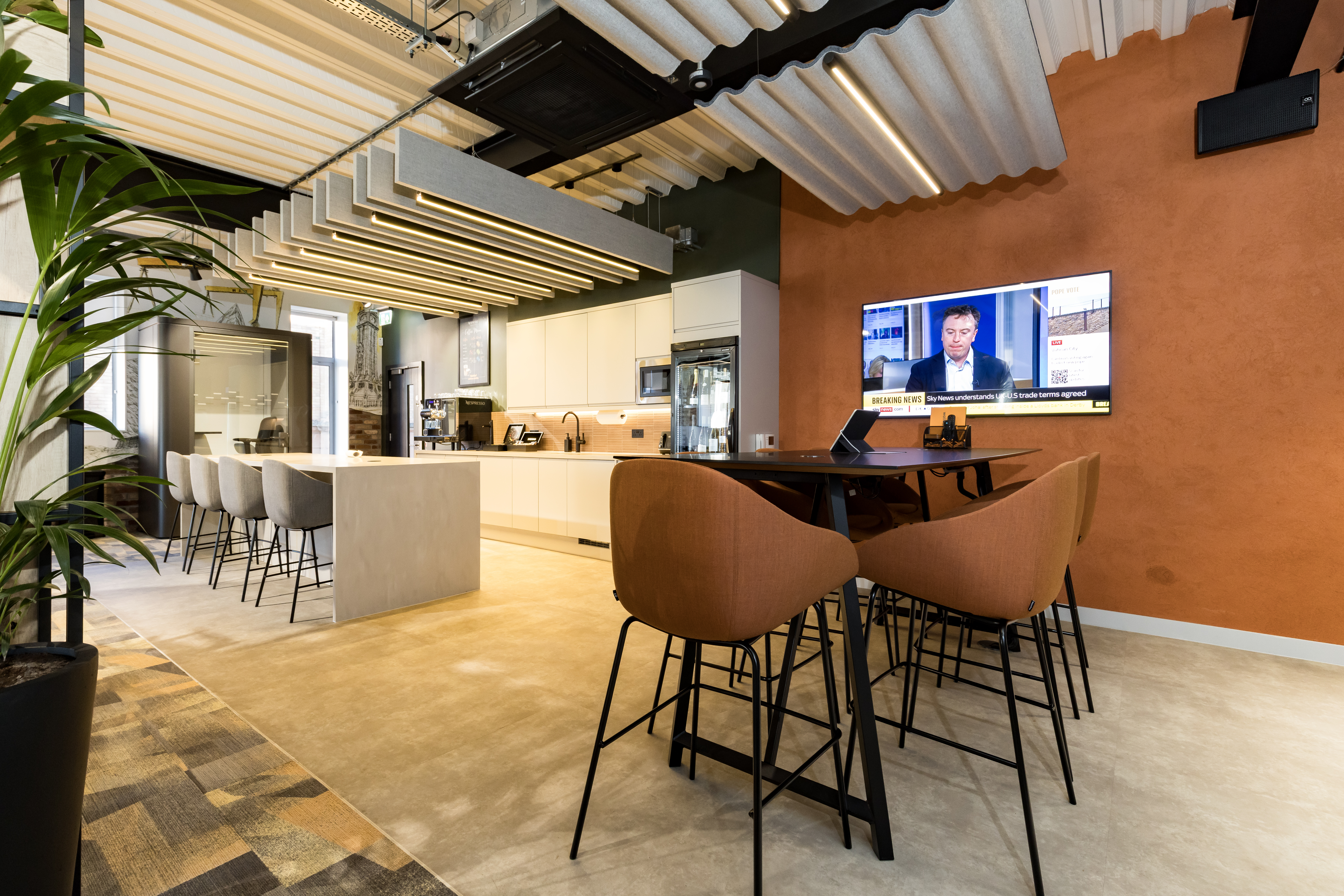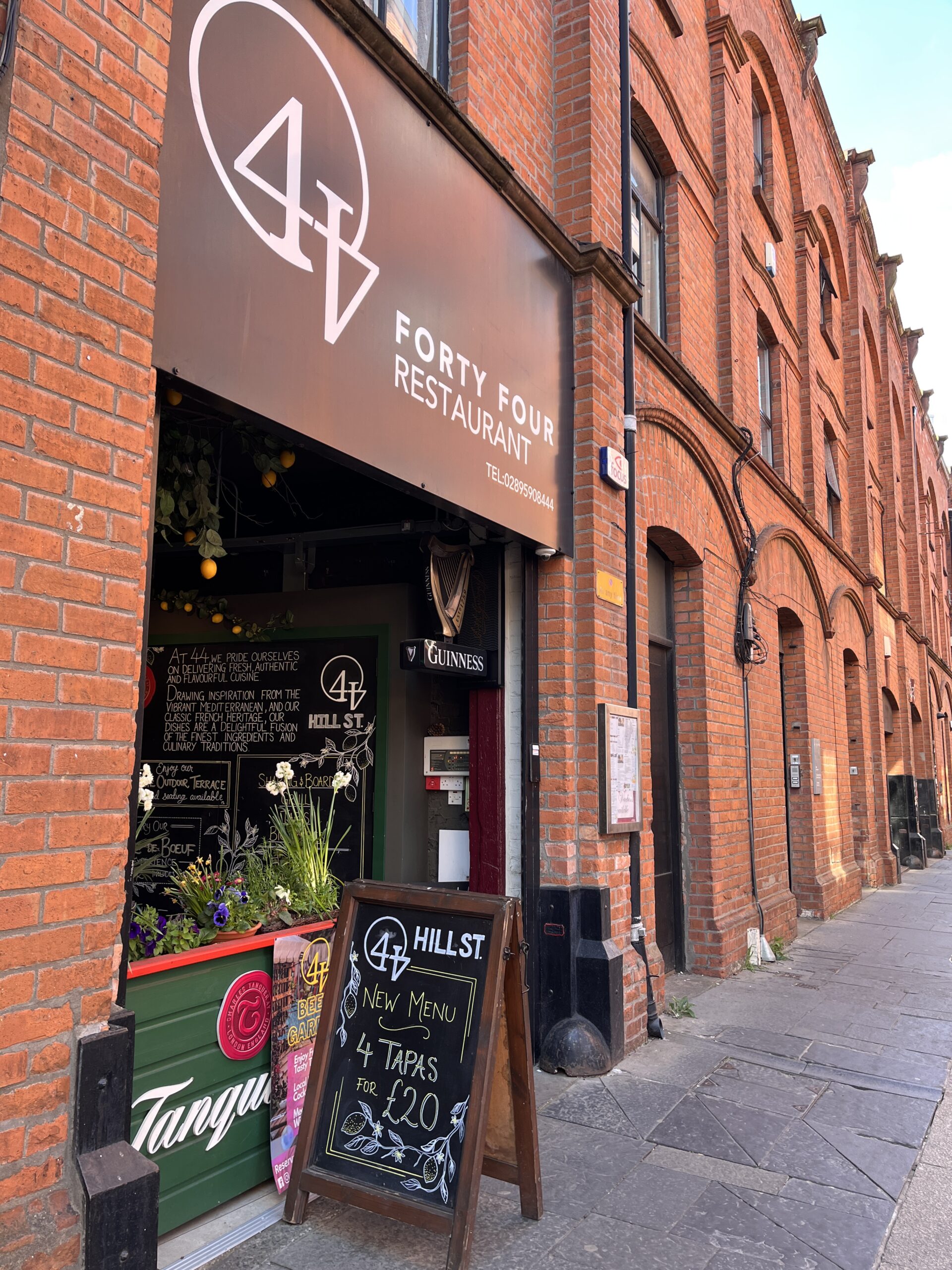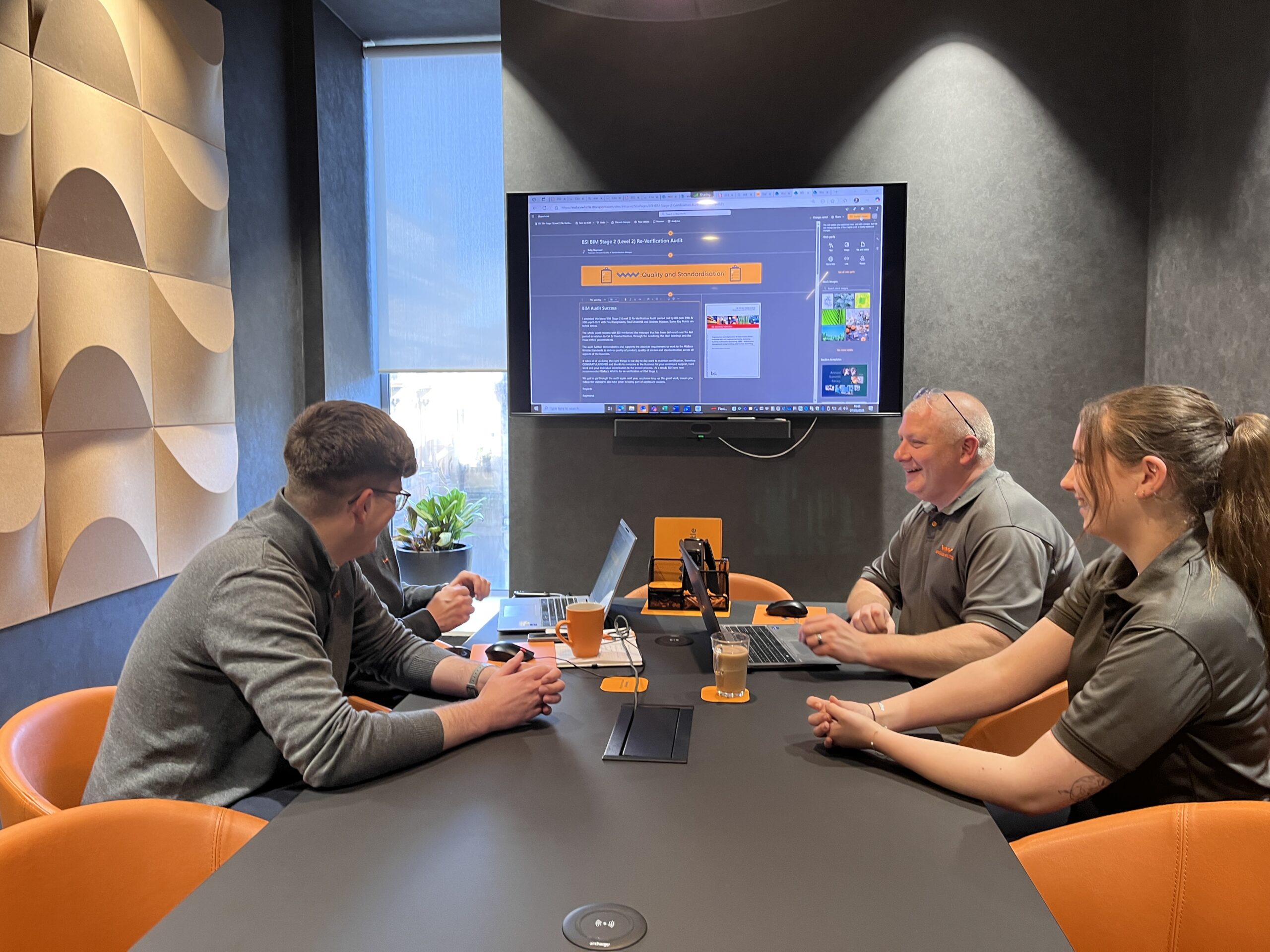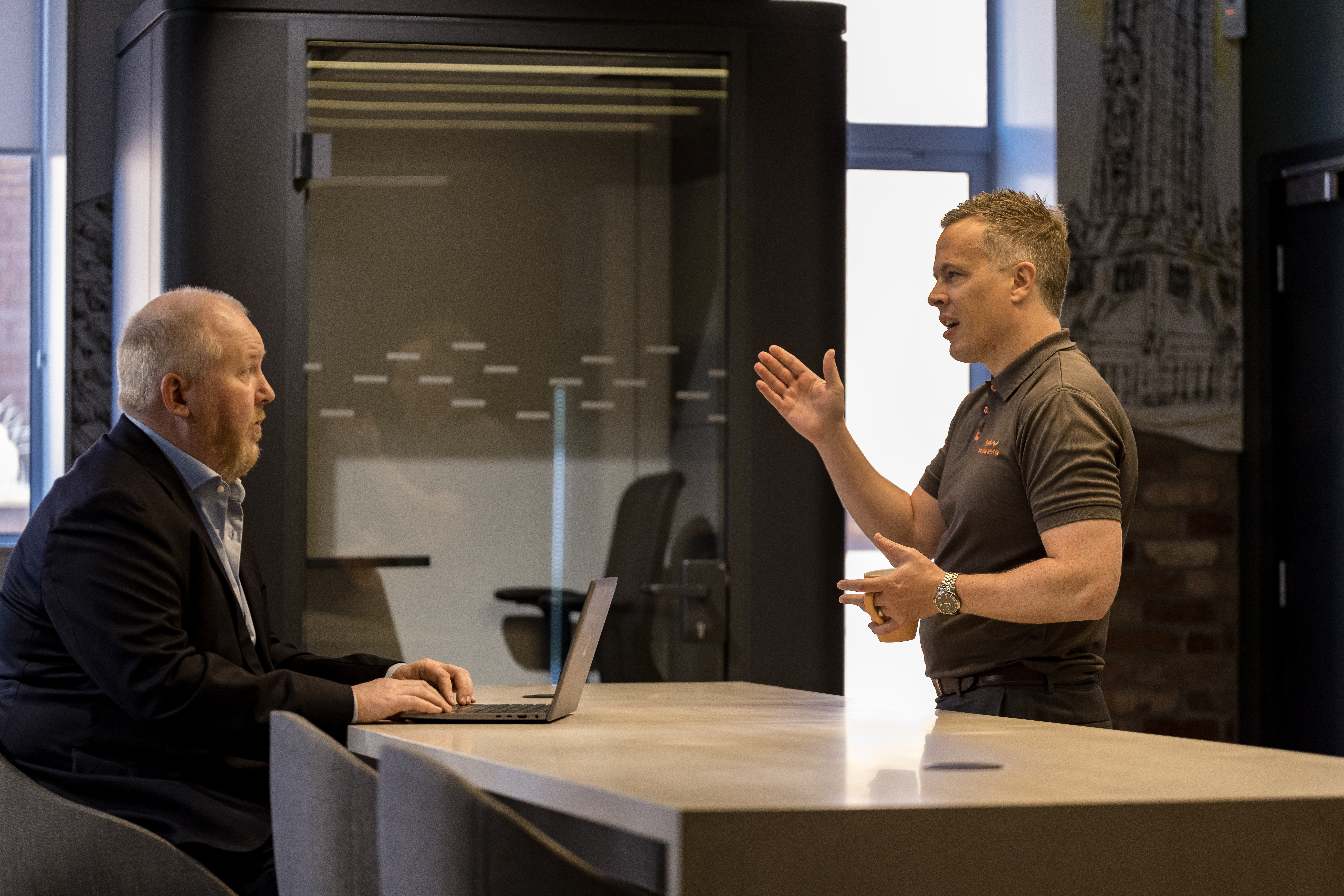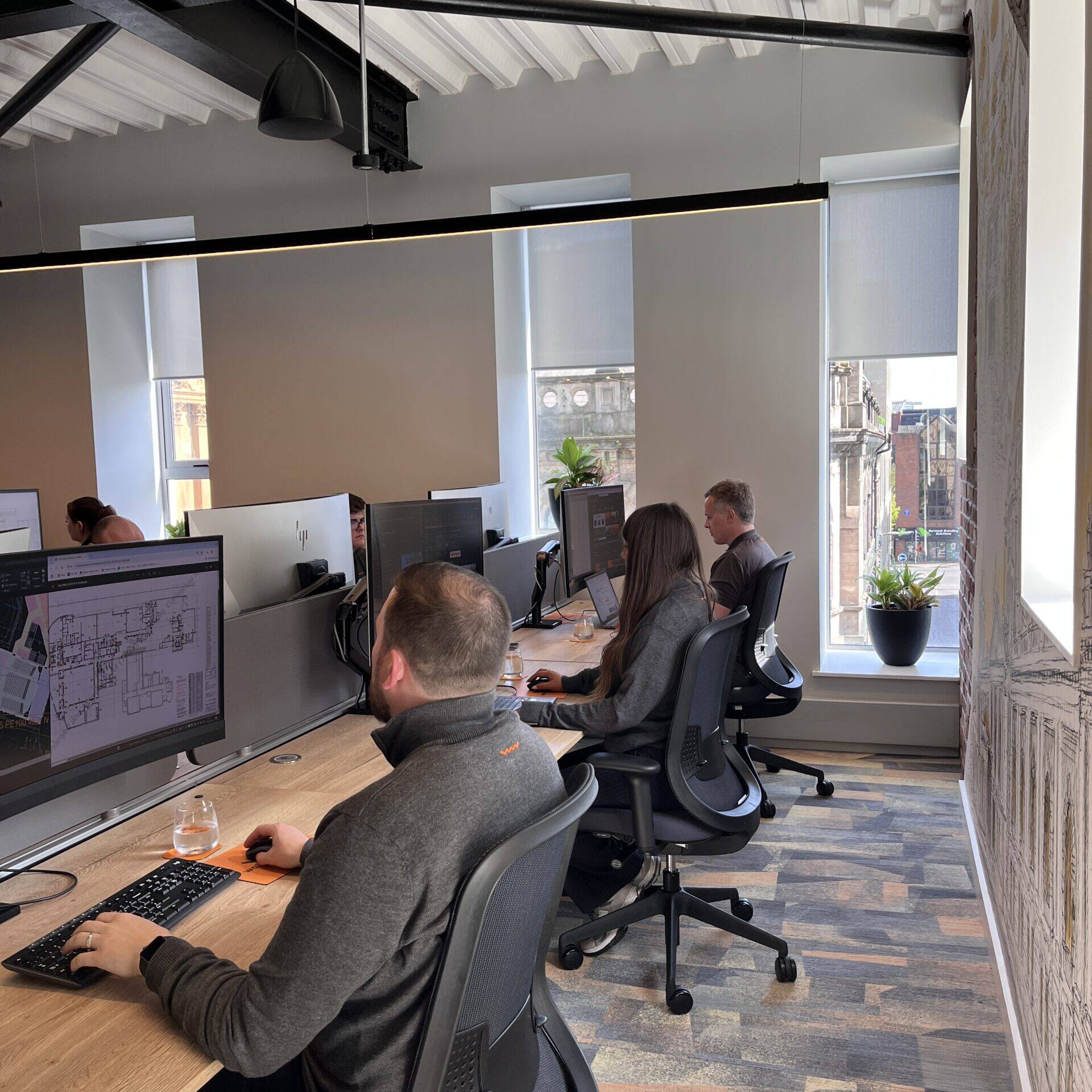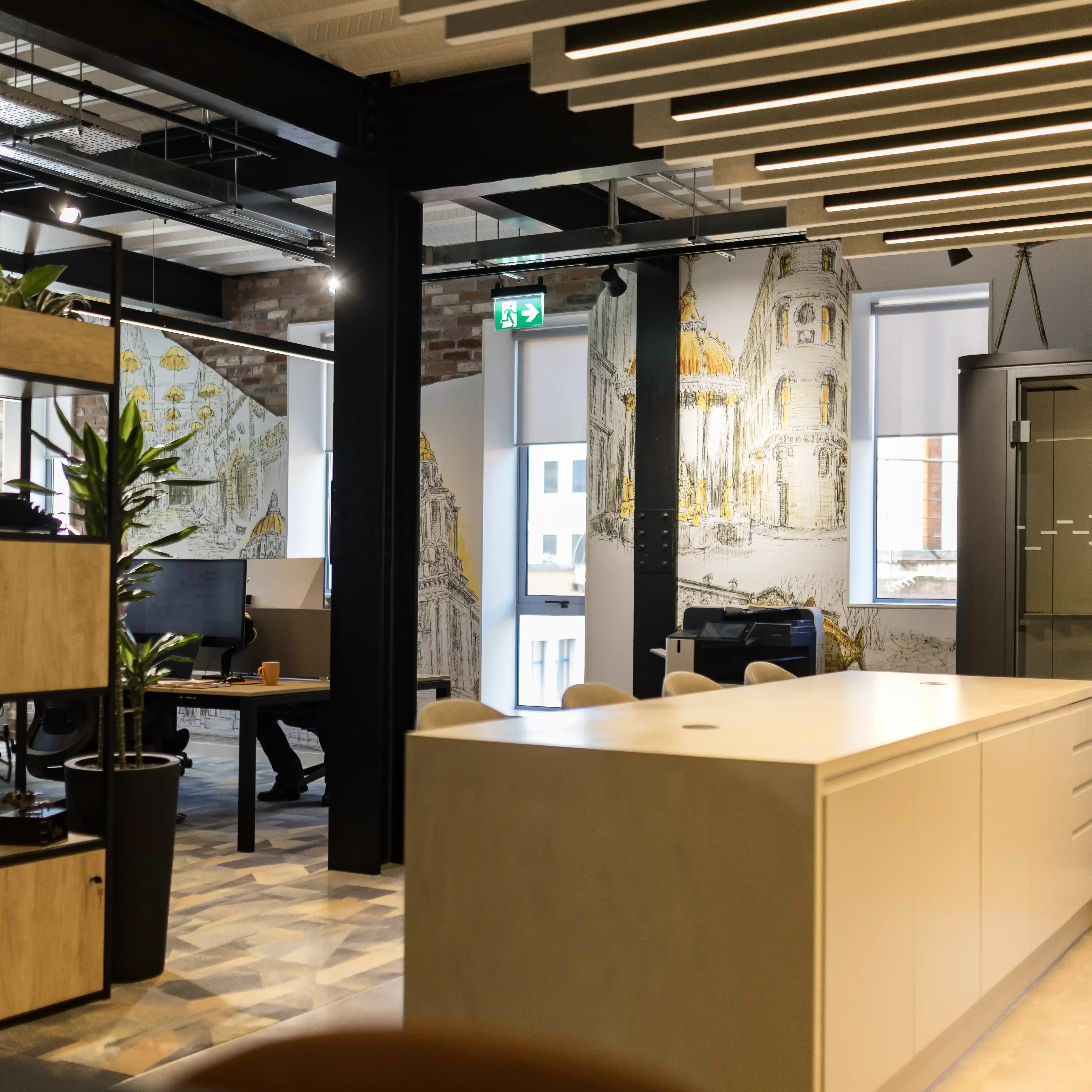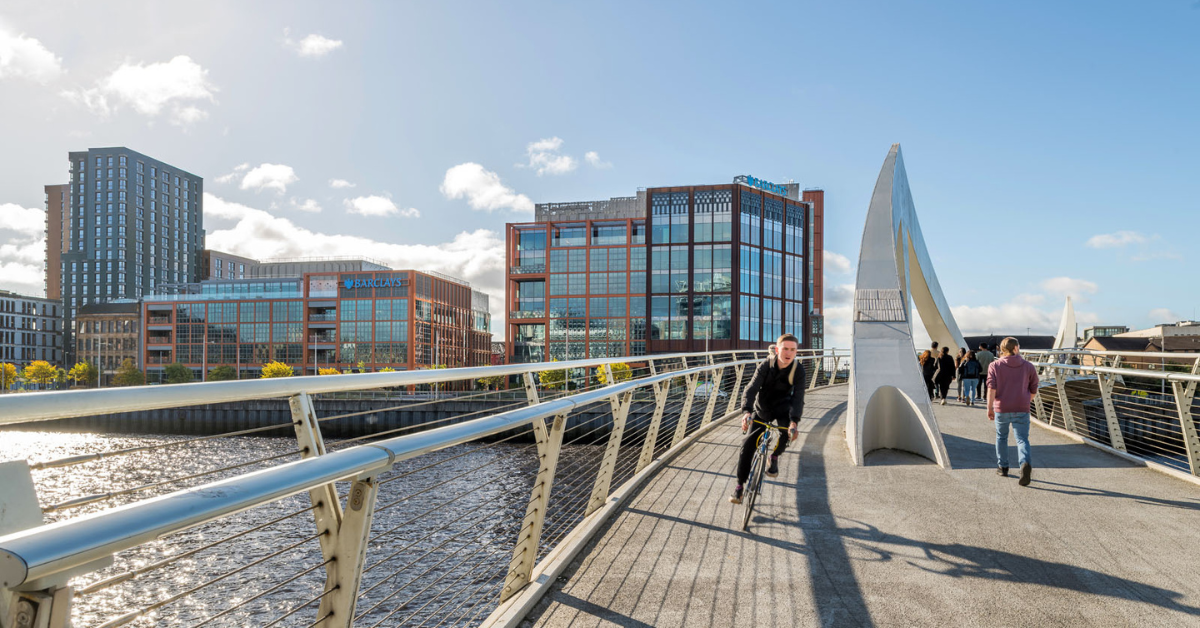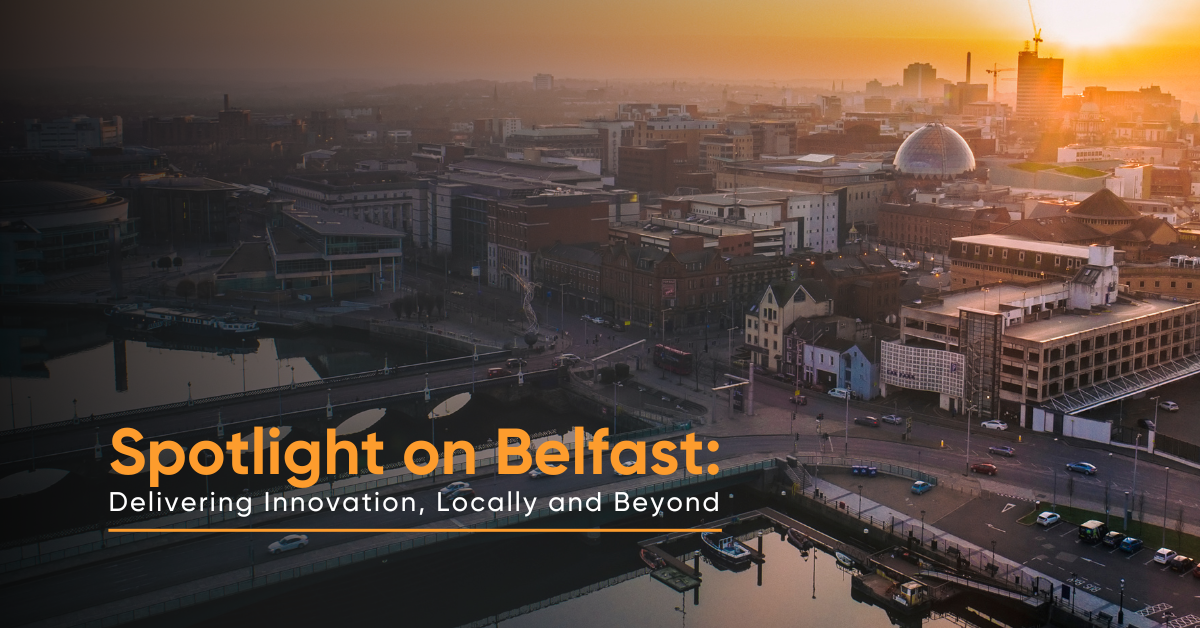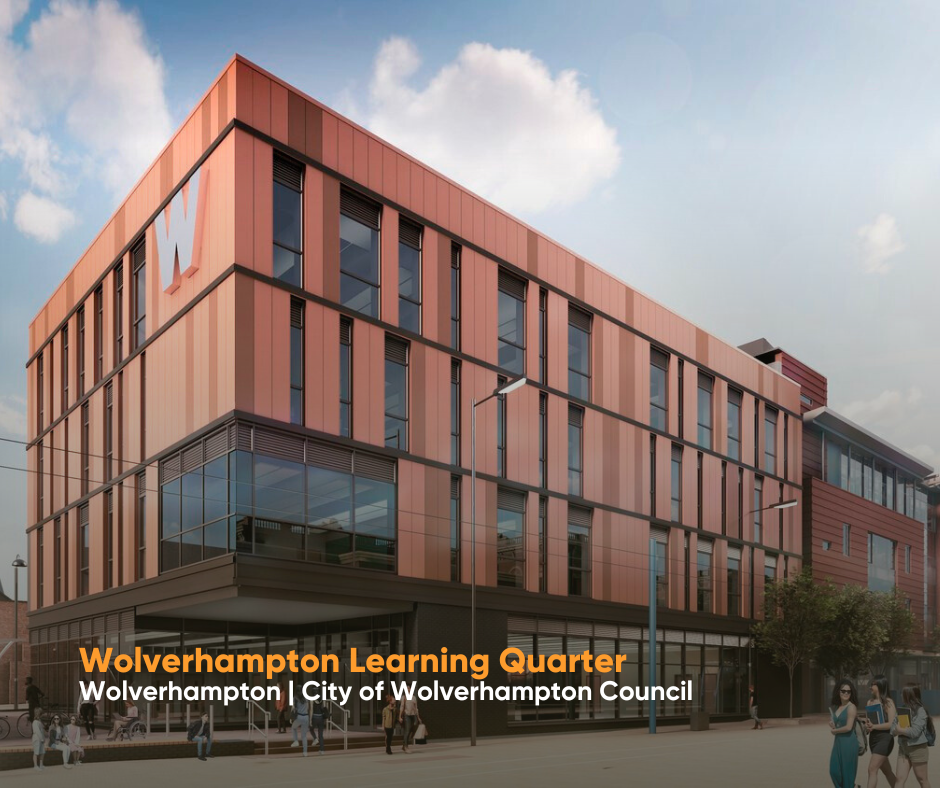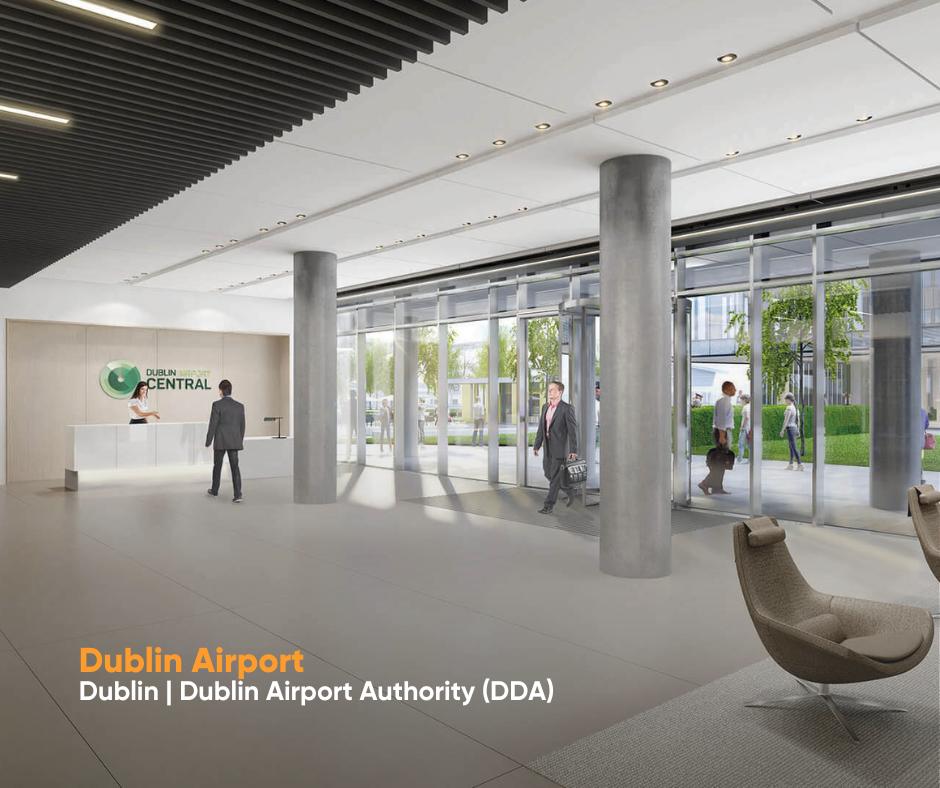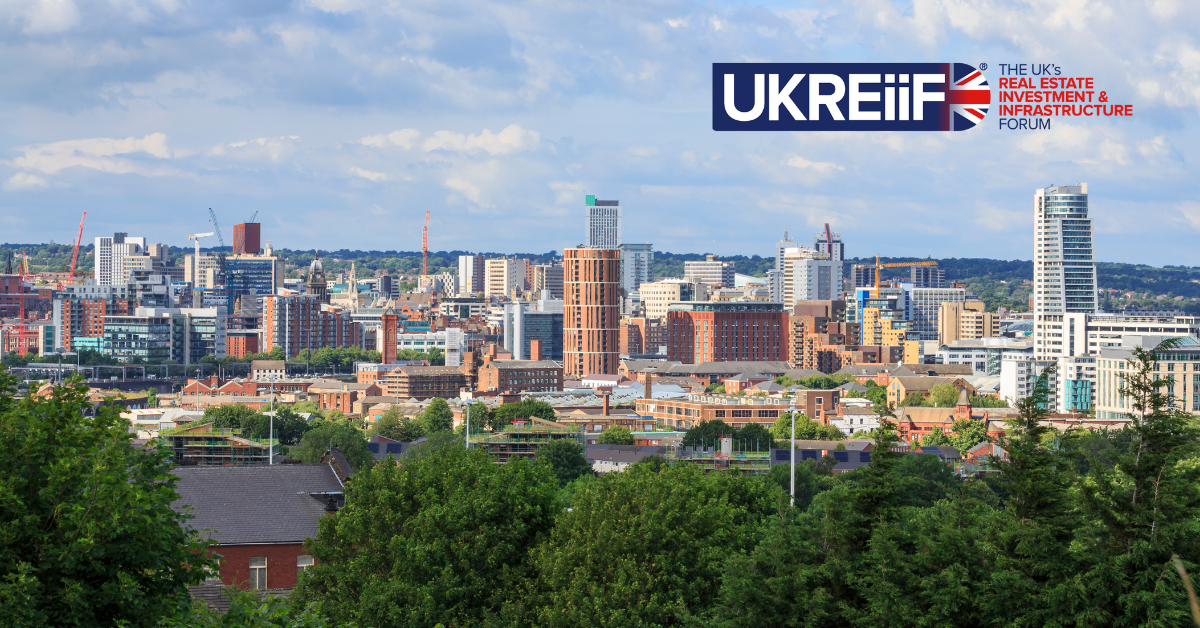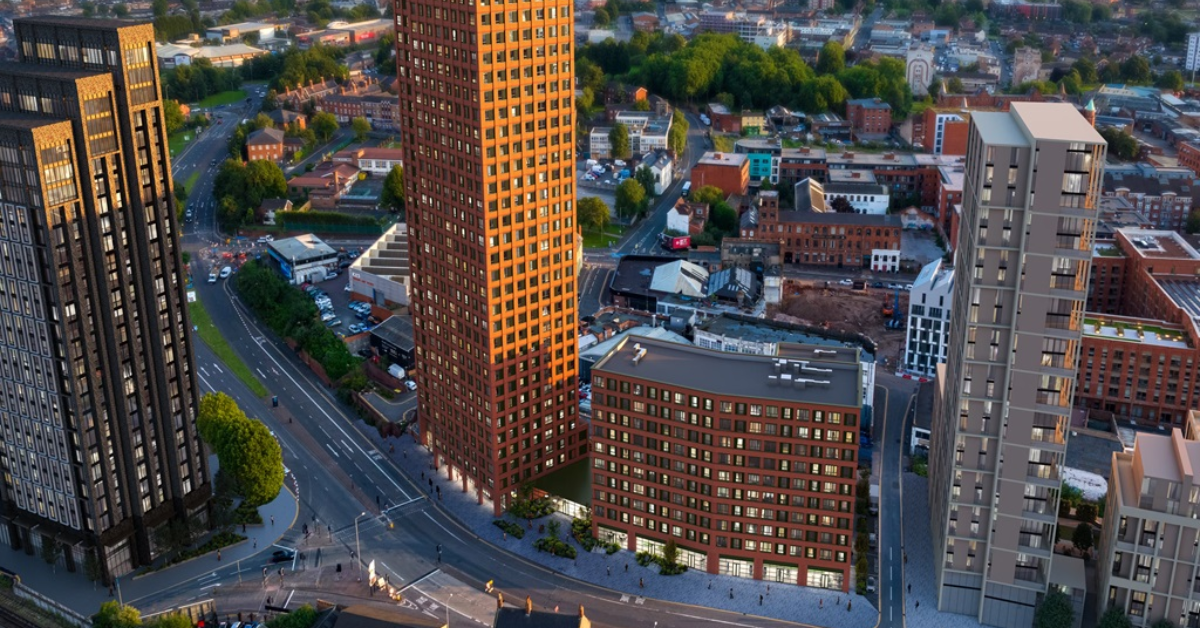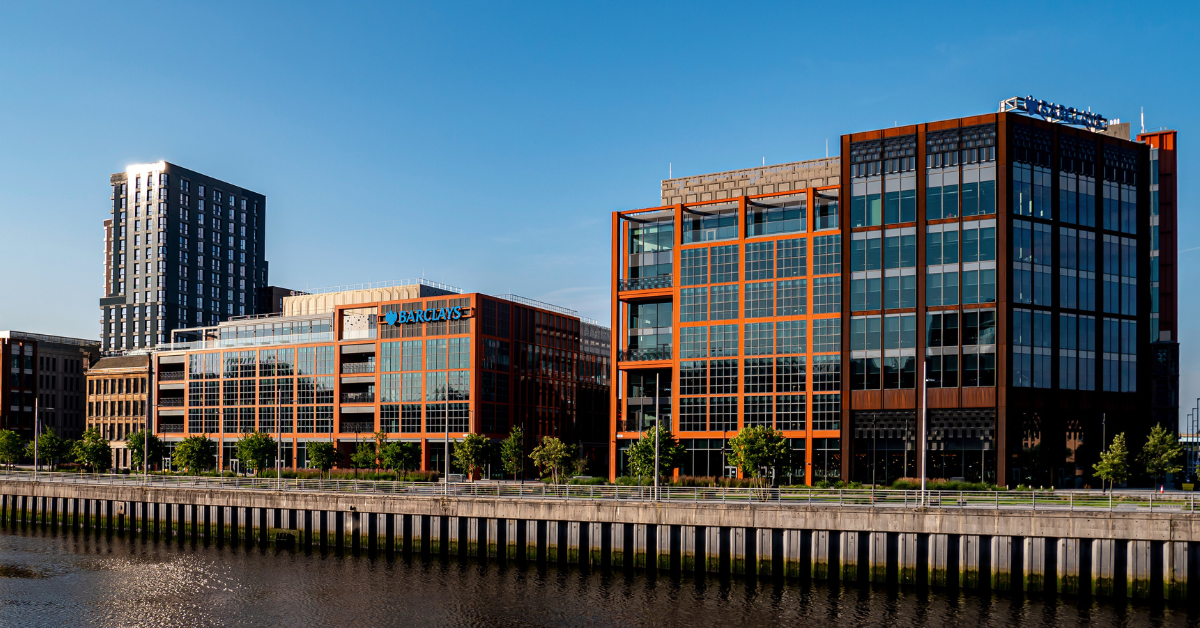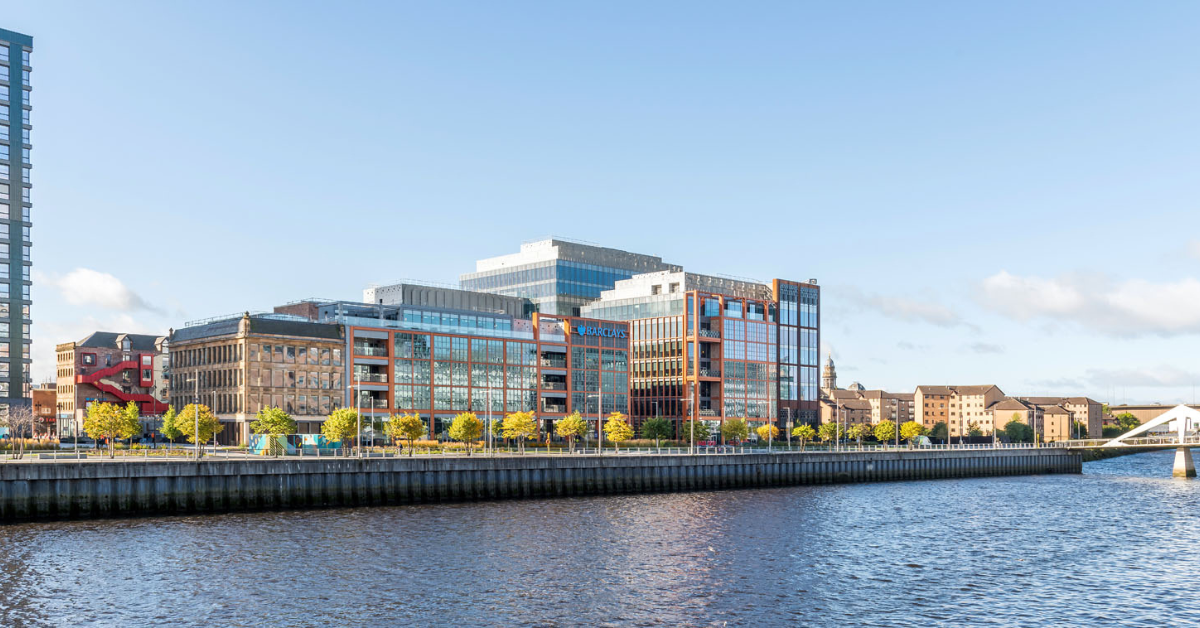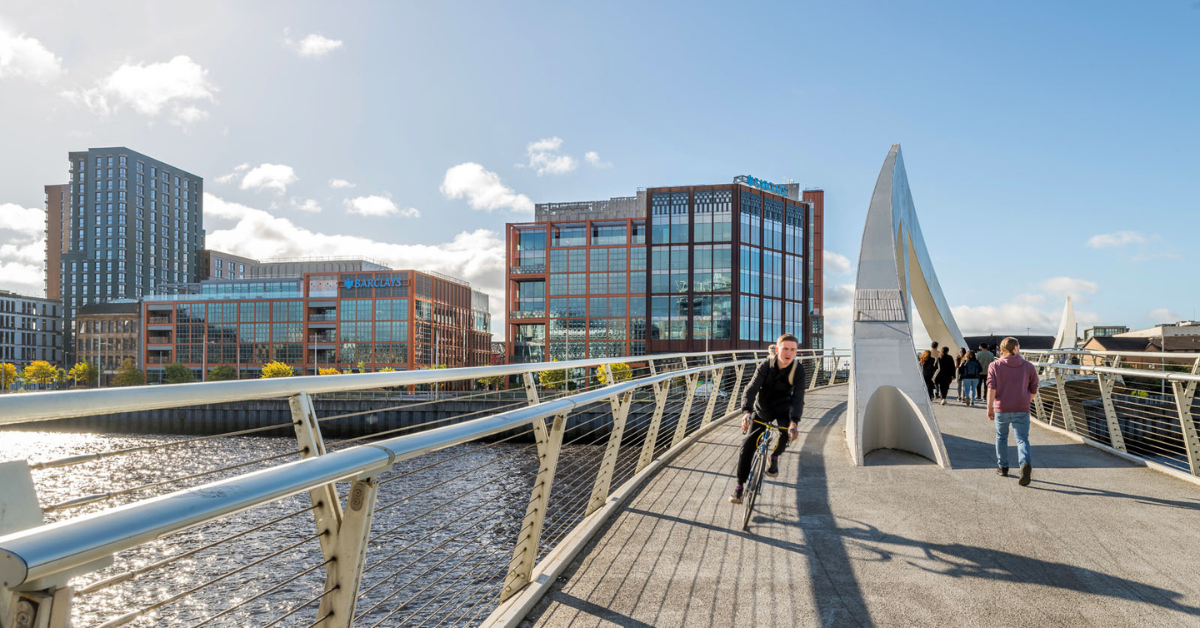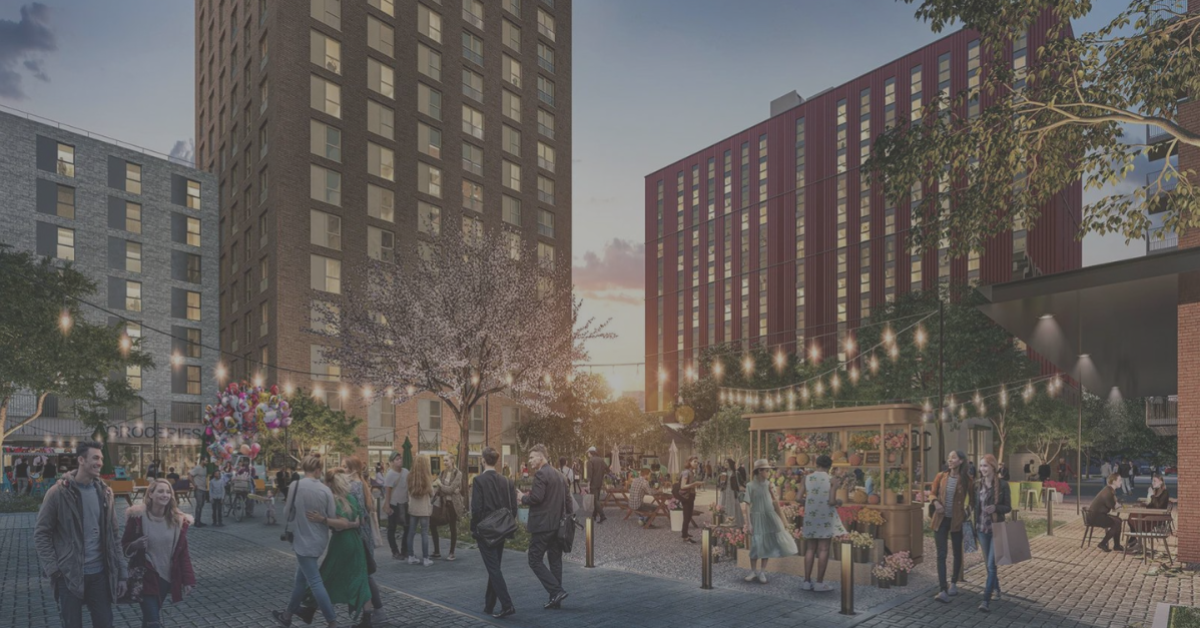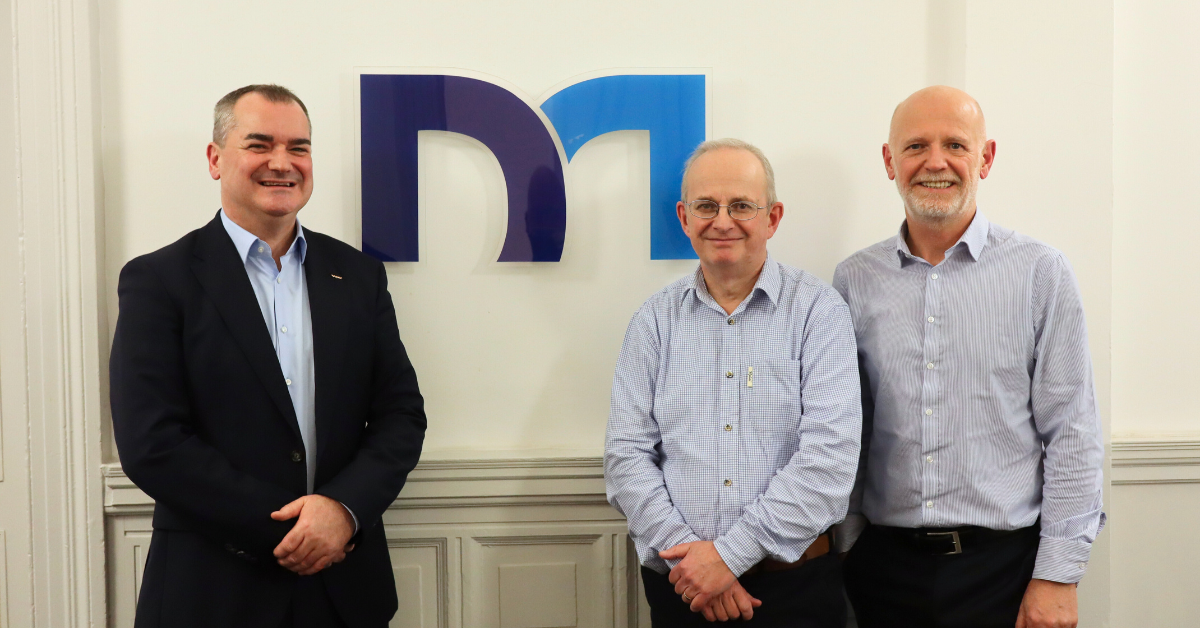Welcoming the Next Generation
News
Welcoming the Next Generation
Work Experience at Wallace Whittle Summer 2025
WWith the summer holidays nearing a close across the UK, we took the opportunity to chat with some of the students who spent their summer with us for work experience.
We try to give our work experience students a feel for the different areas we cover in our offices, from electrical and mechanical engineering to sustainability. We can also offer placements in other areas of the business, such as finance and marketing.
Because many students are still figuring out which direction they want to take, having the chance to try out different roles can help them narrow down their interests or even discover something completely new. This year, we welcomed more students than ever across the business, particularly within our MEP and Sustainability teams.
This summer, we welcomed Euan and Ava to our Sustainability teams in Glasgow and Edinburgh. Euan had recently finished his degree in Geography and was keen to gain some hands-on experience before heading to Barcelona to begin his Master’s in Sustainability Management. Ava joined us after completing her degree in Ecological and Environmental Sciences and is preparing to start a Master’s in Energy, Sustainability, and Development at Durham University.
For both, the placement offered something more than just practical experience; it provided a fresh perspective. Euan, who was completely new to building services, found that working with tools like IES gave him insight into areas of the industry he hadn’t previously considered, and helped him imagine new possibilities for his future career. Ava had a similar takeaway, finding the experience valuable for learning skills that go beyond seminars, things you only pick up through doing the work.
Reflecting on her time in the Edinburgh office, Ava shared:
“The team in the Edinburgh office made me feel so welcome from day one, they took their time to answer all my questions (even the slightly silly ones) and helped me get to know everyone.”
Euan echoed this sentiment, highlighting how the experience helped him build confidence with new tools and concepts:
“Andy has been incredibly positive, and his guidance had been fantastic and very engaging through introducing me to the IES software, allowing me to begin assisting with projects and reports.”
Both students were mentored by Andy Chan, Principal Sustainability Consultant, and Jamie Renwick, Sustainability Consultant. Their combined support and guidance helped shape the students’ experience, speaking about the value of mentoring, Andy reflected:
“It’s a great opportunity to share industry knowledge while also gaining fresh perspectives. Watching them grow in confidence and apply their academic backgrounds to real-world challenges is what makes these placements so valuable, both for them and for us as a team.”
Jamie added his thoughts on the importance of nurturing student talent:
“It’s a fantastic opportunity to work closely with people at different points in their educational journey. I think that if we can help nurture students so that they can grow to present themselves confidently, the technical engineering knowledge will be easy to obtain.”
We also welcomed Mackenzie to our Glasgow office this summer, a final-year Product Design Engineering student from the University of Strathclyde. Throughout the placement, Mackenzie shadowed a number of engineers across different disciplines, including Electrical, Mechanical, and Public Health engineering. This broad exposure allowed him to understand how each discipline contributes to a project and how they work together to deliver rounded design solutions.
At Wallace Whittle, we like to tailor our placements to suit each student’s level of experience and background. Our training is designed to accommodate a wide range of skill levels, allowing students to build knowledge at their own pace. Depending on the duration of their placement, students may also contribute to live project work. For older students, particularly those in university or who have recently graduated, we encourage greater independence, giving them the chance to take on more responsibility. This not only helps build technical confidence but also offers valuable insight into the day-to-day workings of a professional office environment, something many students aren’t typically exposed to during their studies. It also helps ease the transition from academia to full-time employment.
By contributing to live MEP design work, Mackenzie developed a real appreciation for the level of detail and planning involved in building design. He shared:
“It has been brilliant to understand what goes on behind the scenes when designing a building and how much thought goes into every small detail. Whilst challenging, it has been rewarding working on real projects covering all aspects of MEP. I’m excited for the rest of my time here and grateful for all the knowledge which will no doubt help me in my final year of studies.”
We also spoke to one of Mackenzie’s main mentor, Mechanical Engineer David Brown, to hear from him regarding the mentoring process and how Mackenzie benefited from his time here:
“I think we sometimes forget that it can be intimidating to walk into an office environment for the first time, there’s etiquette and processes and emails to get acquainted with before you even start on any technical content. It’s great to see people, like Mackenzie, gain confidence about the office and begin to deliver work that they wouldn’t have been able to when they first walked in the door.”
For our younger students, we like to provide early-career staff with the opportunity to step into mentoring roles. This summer, we welcomed Callum and Brenden to Wallace Whittle, both recent school leavers who were weighing up their next steps, whether university or a degree apprenticeship. Their placement offered an introduction not only to the world of building services but also to working in a professional office environment.
Throughout their time with us, they gained a clearer understanding of what we do at Wallace Whittle and how sustainability is embedded across our projects. Supported by our Graduate Mechanical Engineer, Jack, and Degree Apprentice, Kelsey, both students were able to develop practical skills and grow in confidence as they explored the possibilities of a future career in engineering. Learning not only the basics but also starting to contribute to live projects and working on calculations.
Brenden shared:
“My time with Wallace Whittle has been very insightful, and the team has taught me lots about what services the company offers whilst being sustainable. The skills I have learned have been very useful in my path for the future, and I am hoping for a future in electrical engineering.”
We also spoke to Jack, one of their mentors, about the value of mentoring both for the students and for himself:
“Working alongside students provides a unique opportunity to gain insights into our processes, and how they could improve, that we ourselves may overlook. Sometimes, taking things back to first principles is exactly what’s needed to drive quality. And it’s always rewarding to see how students can take initial concepts and develop them into new working ideas.
Beyond the purely technical experience, I believe Wallace Whittle in particular can help develop an overarching mindset that prioritises efficiency and quality. Both are highly desirable qualities in any Engineer.”

Work experience placements offer students valuable insight into how engineering works in practice, helping to bridge the gap between classroom learning and real-world applications. By stepping into a professional environment, they gain exposure to live projects, new tools, and industry processes that bring their studies to life.
At Wallace Whittle, we’re so proud to support the next generation of engineers, whether they’re still at school, in further education, or about to begin their careers. Through tailored placements across our disciplines, we aim to inspire, guide, and equip students with the knowledge and confidence to take their next step.
If you’re interested in joining Wallace Whittle or learning more about our work experience and apprenticeship programs, please reach out to us at [email protected] or visit our dedicated webpage.
AWWay Day 2025: WWe've been to Paris!
News
AWWay Day 2025: We've been to Paris!
WWe're just back from a week in the sunshine in Paris for our 2025 AWWay Days.
WWe believe in looking after our staff to ensure that they can deliver the best possible, high-quality work for our clients. That means market-leading benefits, high-spec offices and the best Company Away Days you could imagine – we’ve just returned from an unforgettable trip to Paris with over 100 of our team!
We brought together staff from all 9 of our offices across the UK, giving them time together to explore Paris, meet colleagues in person and take time to relax and have fun. We don’t bring our laptops, encourage everyone to get off their phones to allow them to take a well-deserved break and fully immerse themselves in the experience.
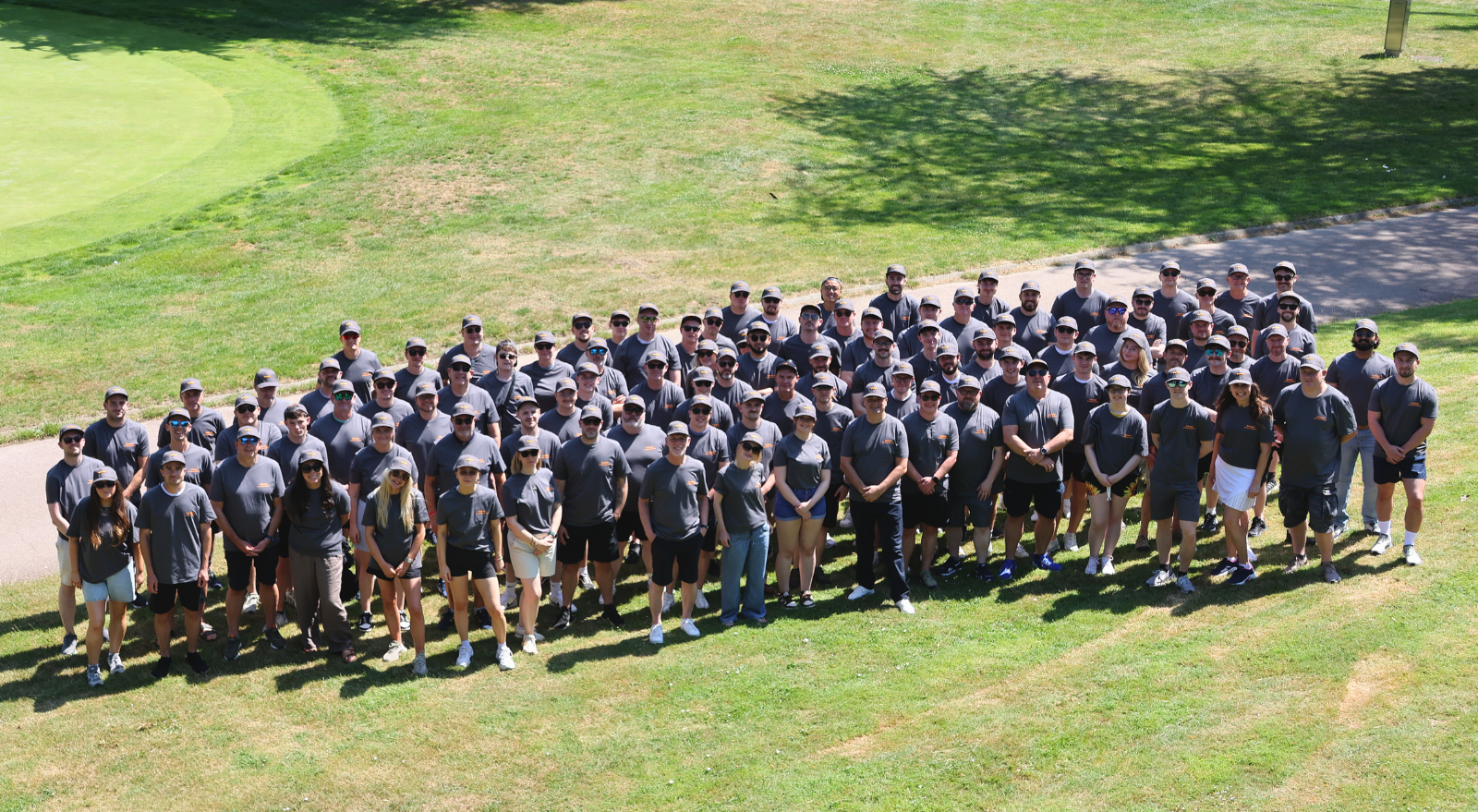
Our Board and Management teams headed out early in the week to explore Paris and attend a Management Conference (we did do some work!) looking at efficiency and productivity improvements we can make across the business. Our wider staff team joined on the Wednesday to enjoy time in Paris, doing photo challenges and basking in the sunshine on the Seine boat-buses or the gardens of the Eiffel Tower.
We all came together on the Thursday at our fantastic venue, Golf de la Boulie near Versailles, to attend a staff briefing with our Managing Director, Allan McGill where we discussed the year’s successes, news and updates across the company. This was followed by a lively Q&A hosted by Andy Chan, Principal Sustainability Consultant and Personality Hire, who put Allan on the spot with questions such as ‘If you could pick one of our graduates or trainees to replace you tomorrow, who would it be?’ and ‘Who is your favourite child? Mechanical, Electrical, Public Health, ESG or Sustainability?’ – we’re unable to provide his responses externally…
This was followed by a BBQ in the sunshine and our traditional bonding activity of staff games. We donned our branded AWWay Day Paris t-shirts and got into teams for some competitive challenges, including gladiator-style battles, bug-eating and problem solving. Congrats to the winning team on the day – it was worth the sunburn!
In the evening, we mixed our groups up again, treating staff to a beautiful dinner in the evening sunshine. Glasses were clinked, toasts were made, WW temporary tattoos tattooed and we danced the night away in the beautiful surroundings of the golf club.
Feedback from the event has been overwhelmingly positive, affirming the value of this time away from our desks to relax and build relationships across offices and departments. At Wallace Whittle, we are committed to being market-leading for our people, which includes investing in our employee’s well-being and fostering their professional growth. Our initiatives include opportunities for learning and continuing professional development through our Academy, access to healthcare and well-being support services, an annual allowance for branded clothing and accessories and support for hybrid working.
Check out the video of our trip below:
A big thank you to Golf de la Boulie and the city of Paris for hosting us!Now, where to next?...
Want to be part of our next AWWay Days? Check out our available roles and join the team – www.wallacewhittle.com/careers
The Influence of AI on Data Centre Design: From the Power Grid to Environmental Demands
News
The Influence of AI on Data Centre Design: From the Power Grid to Environmental Demands
The Influence of AI on Data Centre Design
Over the past few years, the UK has witnessed exponential growth in AI, and the industry continues to expand. The UK AI market is expected to grow to £1 trillion by 2035 (International Trade Administration, 2023) and with generative AI growing in popularity, we are also witnessing an increased demand for AI Data Centres. So, how do we design for now, and the future?
The rise of AI and its impact on data centers means increased power demands, cooling challenges, and the need for resilient infrastructure, there is also currently an international demand for AI-ready data centres, and these spaces require the computing power to train and develop Generative AI models in a safe and resilient environment.
AI’s Growing Demand on Data Centres
Global spending on AI infrastructure is expected to double between 2023 and 2026, highlighting the rapid adoption of AI across various industries. Recently, OpenAI secured a $40 billion funding round, valuing the company at $300 billion. More locally, Westminster unveiled an ambitious Artificial Intelligence Opportunities Action Plan, aiming to establish the nation as a global leader in AI technology. This initiative has spurred over £25 billion in private sector investments into new UK data centers since July 2024, further emphasising AI’s swift growth and increasing integration into everyday life.
However, this expansion comes with significant engineering challenges. Unlike traditional computing, AI workloads rely on GPU-powered racks instead of CPU-based servers. These GPUs consume far more power and generate substantially more heat, demanding enhanced power distribution and advanced cooling solutions to maintain efficiency and operational stability in data centres.
Because AI servers generate more heat, cooling is a major design challenge. Higher-density AI server racks demand modern solutions, which is why we are seeing the adoption of liquid cooling, direct-to-chip cooling, and immersion cooling. These cooling techniques are becoming essential for AI-ready data centres, ensuring operational efficiency while still reducing energy waste. With this increased cooling demand, the opportunities associated with locating data centres in cooler climates could lead to significant energy savings when coupled with elevated water temperatures.
Beyond cooling, the nature of AI workloads also means resilient energy strategies are essential to prevent downtime. Since data centres operate 24/7 365 days a year, power reliability, redundancy, and sustainable energy solutions must be prioritised to support AI Data Centre growth.

Adapting to AI & Cybersecurity Demands
This shift into the ‘AI evolution’ demands continuous adaptation from not only our teams across MEP & Sustainability, but also across disciplines and in other fields, as we need to meet the growing energy needs and heightened cybersecurity requirements. The rise of AI also introduces new cybersecurity vulnerabilities, making it essential for data centres to integrate both physical and digital security measures.
At Wallace Whittle, our experience in MEP and Sustainability across sectors allows us to apply solutions and cross-disciplinary knowledge to our data centre projects. As technology advances and energy systems grow more complex, our designs continually evolve to meet these changing demands.
We are also well-positioned to support our clients in integrating security measures beyond digital assets. Our expertise extends to electronic security and vehicle mitigation strategies, ensuring protection that addresses both physical and digital vulnerabilities in AI-ready environments.
The Sustainability Dilemma: Can the Power Grid Keep Up with AI Demand?
With the rise of generative AI, there’s growing public concern over the energy usage and sustainability of AI data centres. These workloads require vast computational power, which is driving a significant surge in energy consumption across the industry. In Ireland, data centres already account for one-fifth of all electricity consumption (CSO 2023), and in the UK, the National Grid anticipates a six-fold increase in commercial data centre demand by 2034. This presents not only a climate challenge through increased emissions, but also a technical one as electricity grids become increasingly stretched.
The pressure on grid infrastructure is already shaping how data centres are developed. A lack of available grid connections is forcing developers to consider alternative power sources. Off-grid solutions, including gas-powered systems, are making a comeback, although they raise serious questions about long-term environmental impact. In the UK, National Grid and NESO are actively working to expand grid availability. New NESO connection reforms aim to clear the backlog of projects awaiting connection, giving priority to viable developments and accelerating access to clean energy sources.
In response to these challenges, the industry is evolving. Data centres are increasingly being designed with renewable energy in mind. Leaders such as Google are investing in geothermal energy in the US, while Amazon, Meta, and Microsoft are exploring nuclear energy to meet their growing power demands. In one of the most notable examples, Microsoft is planning to reopen Three Mile Island by 2028 to power its data centre operations — reflecting the scale of energy needs now associated with AI computing.
Closer to home, Scotland-based operators like DataVita by HFD are integrating green energy and renewable technologies into their operations. The UK’s temperate climate is also a key asset. At a national level, the UK Government is making AI infrastructure a strategic priority, with plans to develop secure, resilient and sustainable facilities both domestically and abroad (Department for Science, Innovation & Technology, 2025).
Looking ahead, there’s growing interest in how the byproducts of data centre operations can be repurposed. For example, capturing and reusing waste heat from server operations could help reduce overall energy consumption, lower carbon emissions, and even provide heating for nearby homes or businesses. As AI continues to grow, these types of circular, efficient solutions will be vital to balancing innovation with long-term sustainability.
The Future of AI & Data Centre Design
There will be significant and continued growth, driven by increasing demands of AI workloads, and as AI continues to evolve, data centres must adapt
Sustainability will continue to play a huge role in future Data Centre design and as the demand for AI power grows, data centres will have to draw from renewable energy sources and find ways to repurpose waste heat, such as for local heating systems. Regulatory changes will also guide these transformations, ensuring energy efficiency and responsible operation.
Lastly, the design and construction of AI data centres will require more collaboration and expertise across different sectors. MEP design will become even more crucial, with engineers focusing on energy management, cooling solutions, and sustainability to ensure smooth, reliable operations.
As AI demands continue to shape the future of data centres, MEP and ESG considerations are key to ensuring efficient, sustainable, and resilient infrastructure. Our expertise in MEP design allows us to address the high power and cooling needs of AI technologies while integrating advanced systems that optimise energy use whilst minimising the environmental impact.
At Wallace Whittle, we understand the influence that the growth in AI plays on Data Centre Design. If you’re looking to strengthen the resilience of your projects or would like to discuss how our expertise can support your engineering needs, reach out to Stephen Phimister or contact us at [email protected]
Amazon joins Google in taking the nuclear option to power data centres (2024) euronews. Euronews.com. Available at: https://www.euronews.com/business/2024/10/17/amazon-follows-google-in-taking-the-nuclear-option-to-power-data-centres
CSO IE (2024). Key Findings Data Centres Metered Electricity Consumption 2023 – Central Statistics Office. [online] Available at: https://www.cso.ie/en/releasesandpublications/ep/p-dcmec/datacentresmeteredelectricityconsumption2023/keyfindings/
Department for Science, Innovation & Technology (2025). AI Opportunities Action Plan. [online] GOV.UK. Available at: https://www.gov.uk/government/publications/ai-opportunities-action-plan/ai-opportunities-action-plan
GOV.UK (2024). Tech Secretary welcomes foreign investment in UK data centres which will spur economic growth and AI innovation in Britain. [online] GOV.UK. Available at: https://www.gov.uk/government/news/tech-secretary-welcomes-foreign-investment-in-uk-data-centres-which-will-spur-economic-growth-and-ai-innovation-in-britain
GOV.UK (2025). AI Opportunities Action Plan: government response. [online] GOV.UK. Available at: https://www.gov.uk/government/publications/ai-opportunities-action-plan-government-response/ai-opportunities-action-plan-government-response
Hooson, M. (2025) ‘UK Artificial Intelligence (AI) Statistics and Trends In 2025’, Forbes, 7 January. Available at: https://www.forbes.com/uk/advisor/business/software/uk-artificial-intelligence-ai-statistics/.
How AI is changing data center design (2023) Datacenterdynamics.com. Available at: https://www.datacenterdynamics.com/en/opinions/how-ai-is-changing-data-center-design/
How will AI impact the data center industry? (2023) Datacenterdynamics.com. Available at: https://www.datacenterdynamics.com/en/opinions/how-will-ai-impact-the-data-center-industry/ (Accessed: 31 March 2025).
International Trade Administration (2023). United Kingdom Artificial Intelligence Market 2023. [online] www.trade.gov. Available at: https://www.trade.gov/market-intelligence/united-kingdom-artificial-intelligence-market-2023.
McKinsey & Company (2024) The state of AI in early 2024: Gen AI adoption spikes and starts to generate value, www.mckinsey.com. McKinsey & Company. Available at: https://www.mckinsey.com/capabilities/quantumblack/our-insights/the-state-of-ai
PA Consulting. (2025). The AI surge: Can data centres keep the lights on… | PA Consulting. [online] Available at: https://www.paconsulting.com/newsroom/ai-journal-the-ai-surge-can-data-centres-keep-the-lights-on-while-staying-green-6-march-2025 [Accessed 31 Mar. 2025].
Sherin Shibu (2024) Will It Take Nuclear Power to Sustain AI? Microsoft Is Betting on It., Entrepreneur. Available at: https://www.entrepreneur.com/business-news/microsofts-next-power-source-for-ai-data-centers-is-nuclear/480257 (Accessed: 31 March 2025).

Stephen Phimister
Director of Engineering
Related Articles
BIM Stage 2 Re-Verification
News
BIM Stage 2 Re-Verification
BIM Stage 2 Re-Verification
At Wallace Whittle, we are committed to delivering excellence in both our products and our services, ensuring the highest quality.
Our BIM verification process is one of the many ways we demonstrate our in-house capability to successfully deliver BIM Stage 2 projects, which fully align with the RIBA stages and industry best practices.
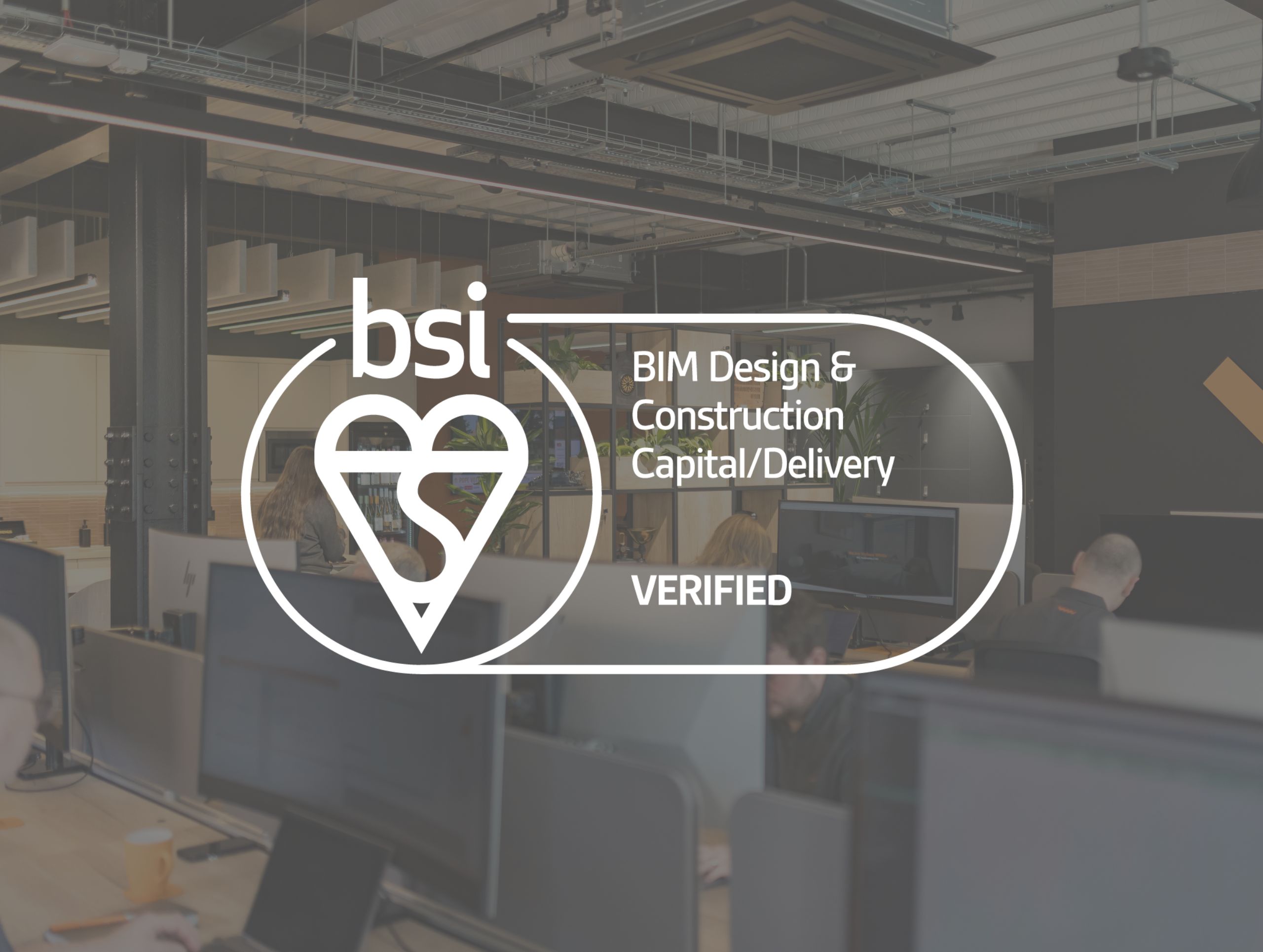
We’re proud to share that we’ve successfully completed our BIM Stage 2 Verification Audit, conducted by BSI (British Standards Institution), for our ninth consecutive year!
This latest audit, carried out on Tues 29th & Weds 30th April, reinforces our ongoing commitment to quality assurance, standardisation, and the effective implementation of BIM processes. It serves as a vital benchmark of our ability to meet industry standards and deliver high-quality outcomes through virtual construction.
The audit reviewed multiple projects across Wallace Whittle, confirming our compliance with BIM protocols and the strength of our internal standards. Our skilled digital engineers apply BIM from the earliest concept stages, enabling us to visualise design intent and make data-driven decisions. Using a robust suite of in-house standards alongside advanced BIM authoring tools, we develop our designs in a 3D environment, facilitating seamless collaboration with our design partners and ensuring efficient information exchange.
This integrated approach allows our designs to transition smoothly into the construction phase, supporting offsite project management, reducing on-site rework, and minimising material waste. By embedding data into our models from the outset, we empower our clients with the tools to build progressive operational datasets, laying the groundwork for comprehensive digital asset management and a full project audit trail.

Over the two-day audit, the auditor demonstrated meticulous attention to detail, thoroughly reviewing evidence to confirm the consistent implementation of our BIM processes across multiple projects. The feedback was overwhelmingly positive, particularly highlighting the strength of our BIM Standards, and the clarity of our process documentation.
Paul Hargreaves, Associate Director & Academy Manager, Paul Underhill, Associate BIM Technician, and Andrew Masson, Senior BIM Technician, were instrumental in the success of the audit, which was overseen by Raymond Kelly, our Quality and Standardisation Manager & Associate Director. Their deep understanding of our systems and processes, along with their ability to efficiently guide the auditor to relevant evidence, played a key role in achieving such a positive outcome.
“Our processes are the principles on which the successful delivery of our projects is based. For an external auditor to review our documentation & project delivery and pass us for this accreditation is testament to the hard work of our project teams in operating in line with the ISO19650 industry standard.” Paul Underhill shared.

Wallace Whittle has once again achieved BIM Stage 2 re-verification, marking another successful year of upholding our commitment to quality.
This accomplishment reflects the collective effort of our entire team and underscores our commitment to maintaining high standards, delivering quality outcomes, and consistently applying BIM processes with precision across all projects.
“Achieving BIM Re-Verification following the 2-day Audit by BSI once again demonstrates our commitment to delivering quality of product, quality of service, standardisation, and consistency across all aspects of the business. A lot of credit must go to our BIM leads, Andrew and Paul, who demonstrated to the auditor how effectively we’re applying these processes in practice.” shared Raymond Kelly.
To learn more about our BIM processes or industry accreditations, reach out to Raymond Kelly our Quality & Standardisation Manager at [email protected]
Wallace Whittle at UKREiiF 2025: The Round Up
News
Wallace Whittle at UKREiiF 2025: The Round Up
Wallace Whittle at UKREiiF 2025: The Round Up
From sunshine to serious discussion, UKREiiF 2025 brought the industry together for three packed days in Leeds.
Our Wallace Whittle team were out in full force over the week, contributing to key conversations around housing, planning, ESG, and sustainability, while reconnecting with clients, collaborators, and colleagues from across the UK.
UKREiiF, organised by the UK Real Estate Investment and Infrastructure Forum, is an event which serves as a platform where industry leaders, innovators, and stakeholders meet, exchange insights, and investigate collaborative opportunities that shape the future of Real Estate and Infrastructure across the entire country.
We spoke to some of our attending delegates to reflect on some of the key themes and many, many conversations they had.

Action Over Words
There was a clear sense of proactivity throughout, underscored by keynote speeches from Deputy Prime Minister Angela Rayner and Minister for Housing and Planning Matthew Pennycook. Their presence reflected a growing momentum in government, with Pennycook in particular emphasising the need for sustained investment in housing as a critical step in addressing the UK’s housing crisis. It’s a welcome shift from rhetoric to action, a theme that resonated strongly throughout the three days.
“In a world where there isn’t a huge amount of money and where some enormous challenges have been left at our doorstep, bringing existing housing stock up to standard, transforming a planning system that was, I think, in all honesty, faltering on all fronts, getting these are all very difficult challenges.” Matthew Pennycook shared.

Angela Raynor also emphasised the need for action, as she spoke on the opening day of the Forum, highlighting some of the activity the Labour Government has had across housing and development, and the aims for local government and ensuring growth, she shared:
“I urge everyone across the whole system to seize them with both hands. To investors, I say there is an exciting array of opportunities. Tom spoke about them. To our housebuilders, we have listened, and we’re reversing the tide to create the right conditions. But now we need you to build, build, build.”
Craig Robertson, Director for England and Head of Residential, captured a prevailing mood across the event: that the time for talking has passed, and delivery is what matters.
“There seems to be more action and less words this year. I spoke to a huge number of people, so many are looking to get things done, which is exactly what we want to see. The message from the Housing Minister was clear: simplify planning, fund affordable housing, and get building. That aligns perfectly with what we do at Wallace Whittle, and with what the country needs.
The Building Safety Act also continues to be a major point of focus, and rightly so. It’s essential that we don’t just build quickly, but that we build safely, responsibly, and with long-term performance in mind.”
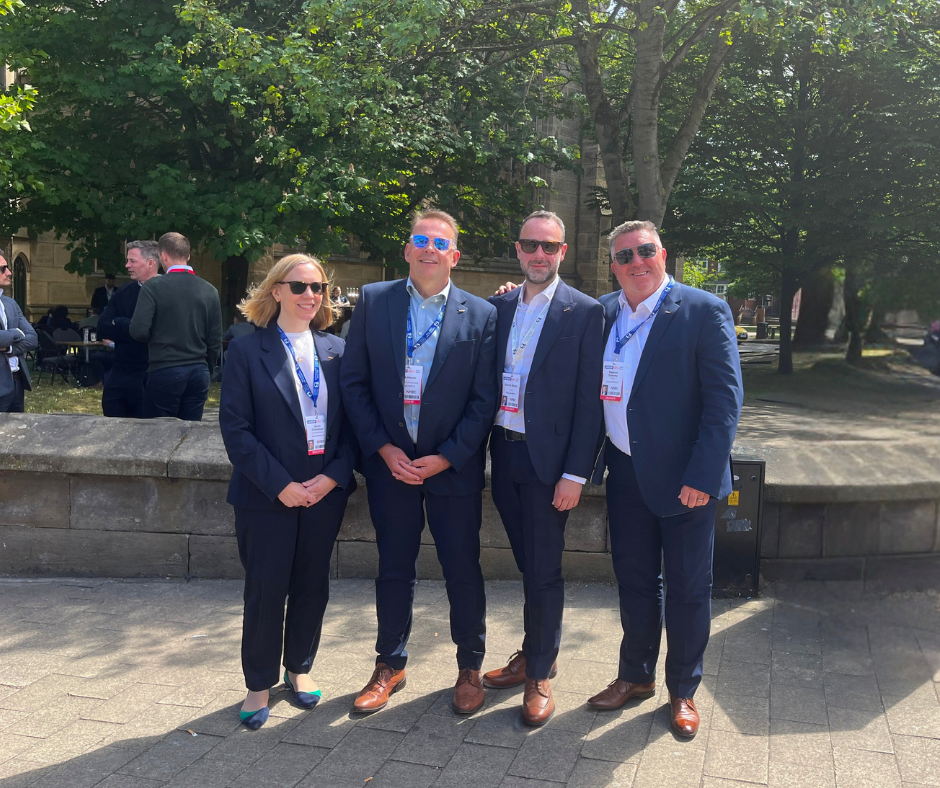
ESG & Sustainability
It was clear from the first morning in Leeds that ESG and Sustainability are no longer a side convention; they are the main stage. From multiple panels, pavilions, to informal chats, ESG and sustainability led thinking was front and center at this years’ UKREiiF.
The UK Government Knowledge Hub’s session, “Accelerating to Net Zero”, drew a packed crowd and set an ambitious tone. With the Government’s mission to “Make Britain a Clean Energy Superpower” as the backdrop, the discussion focused on the vital role the property and construction sectors must play in the nation’s climate goals. Experts from local government, the NHS, and central departments shared emerging best practices in aligning estate strategies with net zero targets, a theme that resonates strongly with our long-standing focus on energy strategy and sustainable performance.
As our Head of ESG & Sustainability, Nick Hayes shared:
“I’ve been to three sessions today that were particularly strong, all focused on ESG and the Net Zero Carbon agenda. It’s encouraging to see these topics no longer treated as add-ons, but as central pillars of how we design, develop, and deliver buildings.”
And from Sarah Chipchase, our Director of Sustainability:
“It’s been a fantastic opportunity to discuss sustainability, in particular. It’s such a big part of the agenda now, and everyone wants to talk about it and see where we are going with it. It’s fantastic to be a part of that progression.”
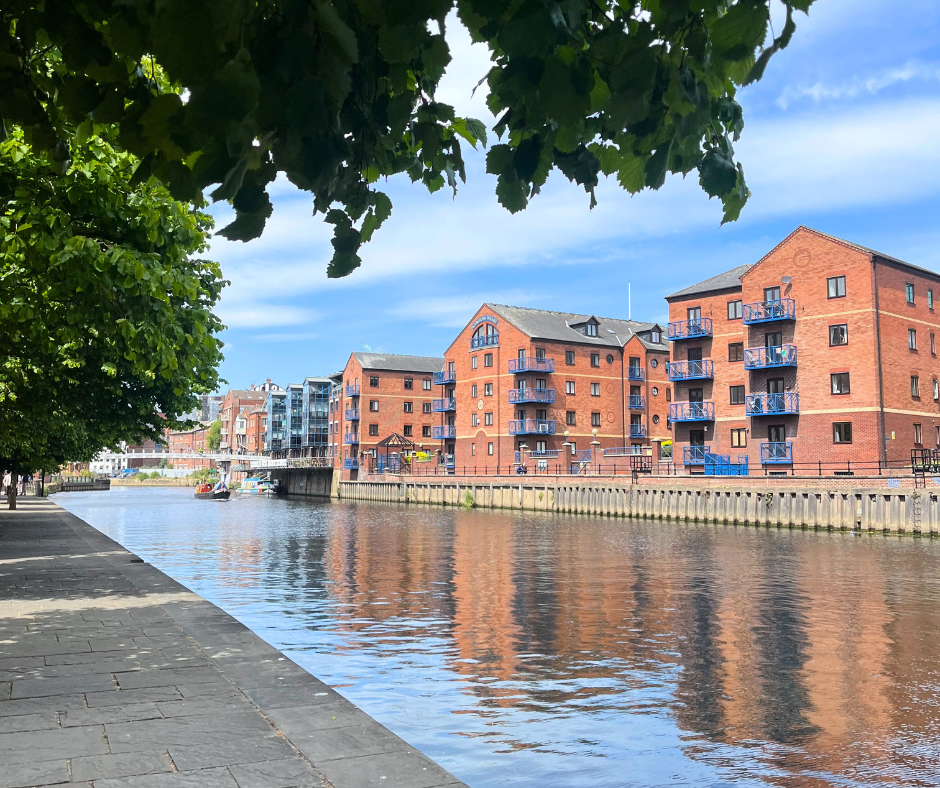
Optimism for Scotland
Scotland had a strong presence throughout UKREiiF 2025, with high-level discussions showcasing the region’s momentum, potential, but also the challenges that demand urgent attention.
A key moment came during the JLL-hosted panel discussion “Growth, Collaboration and Capital: Driving Scotland’s Two Leading Cities”, where leaders from Glasgow and Edinburgh discussed how both cities are attracting infrastructure and housing investment. The panel, featuring local government and industry leaders, underlined the optional of shared vision between Scotland’s largest cities, and how using their collective strengths can enhance appeal to investors, whilst still recognising each city’s unique attributes.
For Stephen Osborne, our Director of Edinburgh, this session struck a chord, he shared:
“There’s a lot of optimism and energy right now, it really feels like ‘Team Scotland’. But we need action. Scotland should already be delivering the kind of large-scale BTR developments we see in Leeds. These schemes are dependent on unlocking the Housing Bill and getting the legislative framework right.
Being in Leeds and surrounded by active developments is a clear reminder of what’s possible when policy aligns with ambition. Scotland is doing brilliant work, but we need political clarity to accelerate delivery.”
Development within the West Midlands
The West Midlands Pavilion was a standout for our team this year, not just for the energy in the room, but for the powerful updates it delivered on the region’s long-term regeneration strategy.
For Darren Wright, our Director in Birmingham, the pavilion reflected the growing ambition and momentum across the region.
“Attending UKREiiF last week was an enriching experience, the highlight for me was the West Midlands Pavilion, it was a hub of activity, showcasing the region’s transformative potential through various development opportunities and regenerative schemes.
A significant highlight was the announcement of a joint venture between Lendlease and The Crown Estate. This partnership aims to unlock substantial development potential, including over 2 million square feet of commercial space and 3,400 new homes at Smithfield. The joint venture is expected to create around 9,000 jobs during the construction phase, including opportunities for apprenticeships and supporting people back into work.”
The Smithfield Project is one of the UK’s most ambitious city-centre regeneration schemes, and Wallace Whittle is proud to be part of the consultant team helping bring it to life. Our work supports the project’s bold sustainability goals and community-driven outcomes, reflecting our commitment to engineering with long-term impact. You can learn more about Smithfield here.
At the same time, Paul Dean, our Director for Manchester, attended a number of key industry-led discussions, including a Bank of England briefing hosted by Turner & Townsend.
“It was an excellent couple of days catching up with old and new connections. A fantastic, well-managed event by UKREiiF, and I want to give a special thanks to Sir Robert McAlpine, Civic Engineers, Turner & Townsend, and Cityheart for the kind event invitations.”
From ambitious panels and energised pavilions to spontaneous conversations and real progress on the ground UKREiiF 2025 reminded us what’s possible when the industry comes together with shared purpose. Across the three days, our delegates engaged in some of the most pressing conversations shaping the future of our towns, cities and communities.
From Scotland’s call for housing legislation and investment, to the West Midlands’ bold regeneration agenda, to national conversations on affordable housing, planning reform and the transition to Net Zero. What stood out the most was the consistency of the message: the need for collaboration, clarity and commitment. Whether it was driving forward landmark projects like Smithfield or helping shape strategies for BTR & PBSA, or pushing for a more unified approach to social value and ESG, our team saw first-hand how aligned the industry is on the issues that matter.
We’d like to thank everyone who made UKREiiF 2025 such a productive event, and we look forward to continuing the conversation!
Get in touch with us today to discuss your next project – [email protected]
Wallace Whittle’s Belfast Office Gears Up for Growth
News
Wallace Whittle’s Belfast Office Gears Up for Growth
Wallace Whittle’s Belfast Office Gears Up for Growth
WWe’re proud to announce the opening of our new Belfast office, a milestone that marks the next phase of growth for Wallace Whittle in Northern Ireland.
Led by Location Director Gavin McCausland, the Belfast team is targeting a 50% increase in turnover this year, backed by plans to expand the local team and deepen our presence in the region and beyond. With MEP designed in-house by our own engineers, the new space reflects our commitment to excellence and showcases the same brand identity, investment and quality standards seen across our offices throughout the UK.
The relocation sees our team move from South Belfast to a new home at The Potthouse, 1 Hill Street, right in the heart of Belfast’s Cathedral Quarter. Known for its creative energy, historic charm, and lively mix of culture and commerce, the area provides the perfect backdrop for our growing team. Surrounded by restaurants, bars, and close to iconic venues like The Merchant Hotel and Duke of York pub, the new office offers a central base for both staff and clients.
Project Focused
Location Director Gavin McCausland highlights that the Belfast team is actively delivering projects not only across Northern Ireland but throughout the UK, supported by a strong pipeline of upcoming work and the need to expand the team to meet growing demand. You can explore more of our standout projects here.
Recent highlights include the £20M New Build Driver & Vehicle Test Centre and DVA Headquarters in Belfast, and ‘The Edge’ which is a a £23M Purpose-Built Student Accommodation scheme located near Ulster University in Belfast, which sets a new benchmark for sustainable student living in the city.
“We have a fantastic team here in Belfast that I’m incredibly proud of. As we continue to secure more work, we’re focused on growing the team to match demand. We’re fortunate to have a strong base of repeat clients, alongside exciting new partnerships that are helping to shape our pipeline.” Gavin shared
While rooted in Northern Ireland, the Belfast team’s reach is much wider, contributing to high-profile developments from London to Wolverhampton, across sectors including education, commercial, residential, PBSA and public realm.
“The strength of our work in Northern Ireland has opened doors across the UK. We’re taking on a diverse mix of projects, and that’s creating opportunities for our team to develop across multiple disciplines.” Gavin added
Inside the Design
The new office space was selected not only for its prime central location but also for its alignment with our sustainability & ESG values. We designed the MEP in-house at Wallace Whittle, working with the wider design team of Form Design Consultants (Architect), Deluxe Group (Fit-Out) and Stothers (M&E Contractors). The Belfast fit-out reflects the same design vision and technical standards seen across all Wallace Whittle offices in the UK.
As an all-electric workplace, the office is equipped with roof-mounted PV and ASHPs, with new glazing improving thermal insulation. To further enhance efficiency, the space is equipped with presence and absence detection for lighting, ensuring that energy is used only when needed. Additionally, it features high-efficiency LED lighting throughout, contributing to its sustainable energy use. These measures are not only environmentally responsible but also designed to reduce operational carbon and support our own wider Net Zero goals.
Staff wellbeing was also a key focus of the design. The office includes real-time air quality monitoring, helping to create a healthier, more productive working environment. This aligns with our internal commitment to ESG, as well as the best practices we recommend to our clients.
“With the expansion of our ESG and Sustainability teams, we felt it was essential that our Belfast office exemplifies the principles we advocate. We’re proud of the result and excited to be in this new space.” Gavin shared.
On a more social and day-to-day level, the new office has been equipped to enhance our staff’s experience. From a top-of-the-range Nespresso coffee machine and a fully stocked drinks fridge to a soundproof phone booth and private meeting spaces, every detail supports comfort and functionality.
The workspace also features large, curved monitors to boost productivity and support visualisation in design work, while hot-desking options encourage flexibility and collaboration across the team.
Our Team
While the new Belfast office reflects our technical expertise and design-led thinking, it’s also a clear marker of our ambitions for growth. Under the leadership of Gavin, the team is entering an exciting new phase, with plans to double headcount and increase local turnover by 50% this year.
From a strong foundation of nine talented professionals, we’re now looking to grow to a team of 20, creating opportunities for both emerging and experienced engineers to join a fast-paced, multi-sector consultancy environment.
With a growing pipeline of diverse projects, a newly designed sustainable workspace, and ambitious plans to expand the team, our Belfast office is well positioned for the future.
Whether you’re a potential collaborator, client, or future team member, now is the perfect time to connect with our Belfast team.
Interested in working with us or learning more about what we do? Get in touch with Gavin at [email protected]
Belfast Job Openings

Gavin McCausland
Location Director, Belfast
Related Articles
Spotlight on Belfast: Delivering Innovation, Locally and Beyond
News
Spotlight on Belfast: Delivering Innovation, Locally and Beyond
Spotlight on Belfast: Delivering Innovation, Locally and Beyond
From landmark student housing schemes to cutting-edge learning environments, our Belfast team continues to design with purpose and precision.
WWith exciting developments ahead for our Belfast office, we took the opportunity to catch up with Gavin McCausland, Director of our Belfast team, to discuss some of the standout projects the office has delivered over the years.
Having been part of the Northern Ireland landscape for nearly 15 years, and with Gavin at the helm for almost 9, the team has been behind a diverse range of projects across various sectors. These projects, both locally in Northern Ireland and further afield, reflect our commitment to quality and excellence. As we continue to grow and deliver high-quality projects, the Belfast office remains dedicated to upholding the highest standards in all we do.
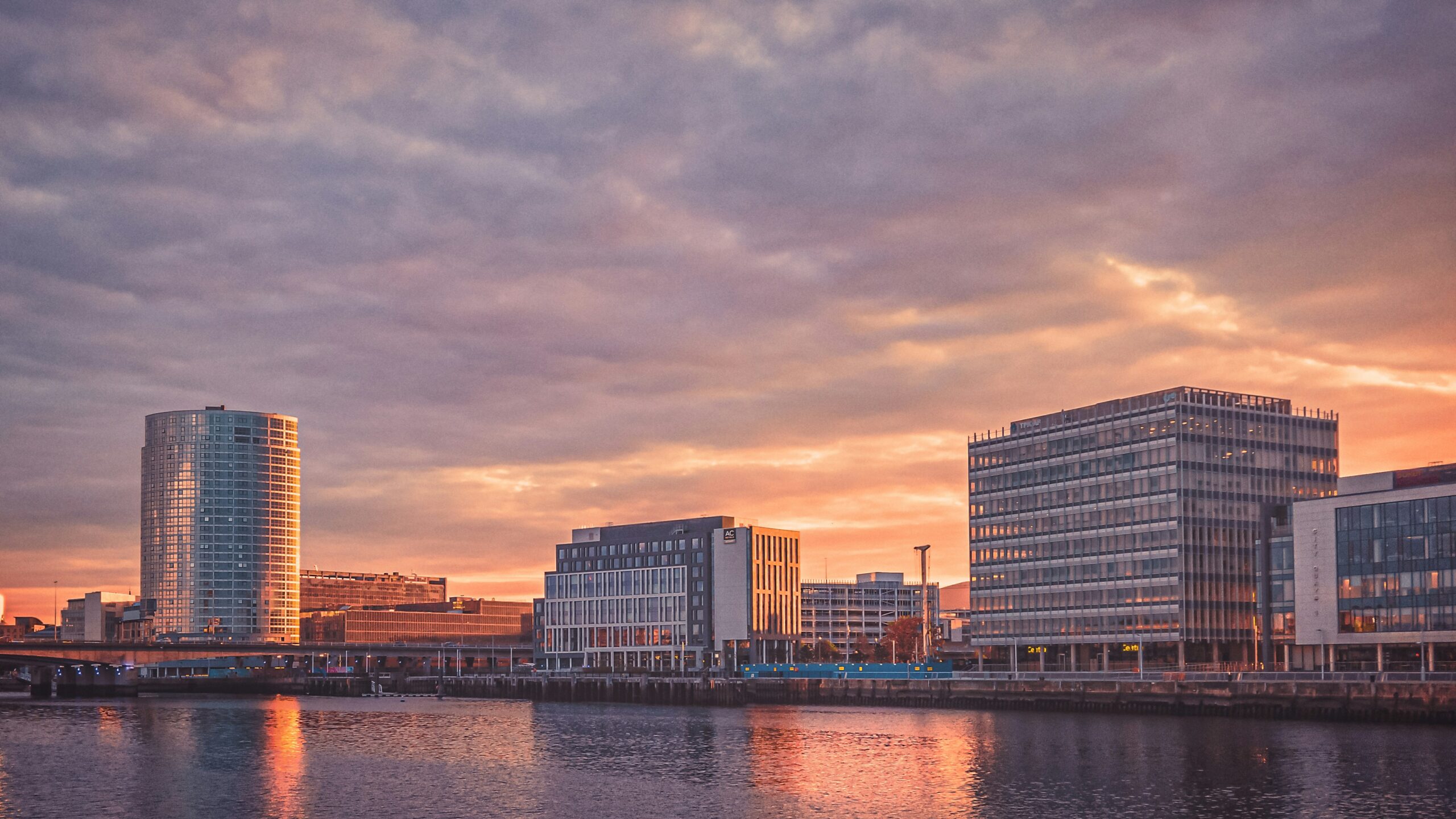
Education
Education has always been a cornerstone of our work at Wallace, and our Belfast office is no different. Over the past few years, we’ve had the privilege of contributing to some incredible schools and campuses, including award-winning projects and major universities. More often than not, the education projects we work on also double as community hubs, meaning cross-disciplinary and community engagement are pivotal.
“Modern classrooms and learning spaces now demand more, from integrated technology to adaptable and futureproof designs. Our team knows how to work closely with educators to translate their vision into a practical and effective design.” shared Gavin
For St. Mary’s University College in Belfast, we helped centralise the Student Services & Support facilities as part of a broader campus upgrade, which included the award-winning Cardinal Newman Library (CEF Award Fit-Out Project of the Year 2023). Our MEP design featured aerothermal heat pumps, mechanical ventilation with heat recovery, and Bluetooth-controlled LED lighting, creating a comfortable, energy-efficient environment for both students and staff. You can learn more about this project here.
We delivered full MEP technical design and building physics modelling for the Wolverhampton Learning Quarter, a modern campus offering A-Level and advanced specialised courses. The design carefully balanced heritage context, respecting the surrounding Victorian and Edwardian architecture, with sustainable, future-focused features. These included BB101:2018-compliant hybrid ventilation in teaching spaces, MVHR, VRF air conditioning, intelligent LED lighting, and integrated systems such as performance lighting, sound, and a dedicated internal recording studio network.
From concept to completion, we supported the delivery of a new ESFA sixth form college in Walthamstow, designed to meet the needs of a highly specialised curriculum. This included dedicated spaces such as media studios and makeup classrooms, which required carefully tailored solutions.
The building features BB101:2018-compliant hybrid ventilation units that provide both fresh air and LPHW heating, alongside MVHR, VRF air conditioning, full LED lighting, a rooftop photovoltaic array, EV charging infrastructure, and Category 6A structured cabling. Designed to achieve a BREEAM Excellent rating, the project also successfully met the London Plan’s target of a 35% carbon reduction. You can learn more about our work in London Schools here
Public Realm
We view the public realm as the vital link between people and place, a setting for everyday life that fosters connection and community. From city centres to rural towns, our work spans a wide range of scales and locations, reflecting the diverse needs of the communities we serve. We take pride in designing spaces that are welcoming and efficient.
Collaboration is central to our approach, we work closely with stakeholders, urban designers, and local authorities. We have delivered public spaces that are inclusive, resilient, and rooted in the unique character of each place.
“Designing public realm spaces is about creating environments that invite people in and make them want to stay. We approach each project with a focus on place-making, ensuring that every detail supports the needs of the community and encourages connection.”
Connecting Pomeroy in Mid-Ulster was a £7.1M PEACE IV-funded project enhancing public spaces with a new visitor centre, upgraded community facilities, and improved public realm. We provided the MEP consultancy, ensuring energy-efficient lighting, heating, and water systems across the development. We also supported upgrades to key community facilities, including a gym and changing facilities at Pomeroy GFC, a multi-use games area at the Presbyterian Church Hall, and a new Church of Ireland Hall.
As part of a €5.5M URDF initiative, we contributed to the Athlone Town Centre Public Realm Enhancement. This project revitalised the town centre with energy-efficient LED lighting, in-ground power provisions, and improved pedestrian-friendly streetscapes, creating a more vibrant and accessible urban environment.
Commercial
Our Belfast office continues to deliver excellence across a range of commercial developments; our teams recognise that the building services systems play a fundamental role in creating environments that not only meet the functional needs of businesses but also motivate employees and can contribute to a greater ethos.
“We spend a huge part of our lives at work, so the spaces we work in really matter. In our Belfast office, we’re focused on designing building services that make offices not just efficient, but genuinely great places to be, comfortable, healthy, and adaptable to how people work.”
This project included the Test Centre, spanning 3,942m² , comprising vehicle testing and plant zones with a two-story administrative block, and the Office Headquarters, spanning 3,209m², which features office accommodation for 170 workstations organised around a three-story open atrium void, with a vehicle storage area at the lower ground level. DVA also achieved a BREEAM Excellent rating for both buildings, facilitated by numerous sustainable MEP initiatives, including PV arrays, solar water heating system and passive cooling systems. You can learn more about this project here
The refurbishment of Chichester House in Belfast transformed the building into a premium office space for Rapid7, designed to encourage collaboration and employee well-being. Wallace Whittle provided MEP consultancy, incorporating advanced heat pump systems, LED lighting, and smart occupancy sensors for optimal energy efficiency. Key features include a two-storey auditorium, technology workshops, and external terraces, creating a dynamic and modern workplace that supports both teamwork and individual focus.
At Dublin Airport Central Phase 1, we delivered the MEP design for a €48M commercial development comprising 20,000m² of Grade A office space. The project featured high-efficiency fan coil systems, prefabricated rooftop plant rooms, and a dedicated medium-voltage infrastructure network to support long-term flexibility. The wider site also benefited from a carefully considered public realm, including full architectural lighting design and a comprehensive underground ducting network to accommodate future expansion. You can learn more about this project here.
At Parklife Putney in London, we were proud to support the transformation of a 70,000 ft² office space, providing MEP and sustainability consultancy throughout the refurbishment and extension. The project brought together old and new, blending modern design with the original structure. We delivered a full Category A fit-out, featuring energy-efficient systems like aerothermal heat pumps, heat recovery ventilation, daylight-sensitive LED lighting, and rooftop solar panels, all of which helped the building achieve a BREEAM Excellent rating.
PBSA
With the demand for student accommodation continuing to rise year upon year, our Belfast office continues to lead the way in delivering high-quality PBSA across the UK, combining sustainability, innovation, and modern living solutions. Our Belfast Team understands the importance of creating spaces that are not only functional and safe but also conducive to the academic and social needs of students. Modern student accommodation demands design features such as high-speed internet, air-conditioned study and communal spaces, combined with secure access.
“For a lot of students, this is their first time living away from home, so it’s important we create spaces that feel safe, comfortable, and connected. In Belfast, we focus on designing services that support both study and social life.”
As the demand for sustainable and modern PBSA continues to rise, the sector must embrace innovation to stay ahead of the evolving needs of future students.
The Edge is one of Belfast’s newest and most sustainable PBSA developments, offering 307 high-quality studio rooms just steps from Ulster University. This all-electric building features full comfort cooling, air source heat pumps, and is targeting key accreditations including BREEAM Very Good, Fitwel, and WiredScore. Designed with student well-being in mind, it also includes premium amenities such as a yoga studio and a cinema room.
At St Thomas Street in Bristol, we delivered MEP solutions for the nine-storey, 378-bed student residence, which was also the first in the city to connect to Bristol’s district heating network. Designed with sustainability at the heart of the project, the building features aerothermal heat pumps, mechanical heat recovery ventilation, and a 26kWp solar PV array. The result is a low-carbon, future-ready environment for students, proudly achieving a BREEAM Excellent rating. You can learn more about this project here.
As our Belfast office continues to deliver impactful projects across the UK and Ireland, we remain focused on driving innovation and sustainability across every sector we work in.
As we grow to support both new and ongoing projects in Belfast and beyond, we’re enhancing not only the office space (announcement coming soon!) but also expanding the team of talented professionals who share our passion for delivering exceptional work.
If you’re looking to be part of a collaborative, forward-thinking team, we’d love to hear from you.

Gavin McCausland
Director of Belfast
Related Articles
Making the Most of UKREiiF 2025 with Craig Robertson
News
Making the Most of UKREiiF 2025 with Craig Robertson
Making the Most of UKREiiF 2025 with Craig Robertson
WWith UKREiiF 2025 less than four weeks away, taking place from 20th to 22nd May, we caught up with our Director and Head of Residential, Craig Robertson, a seasoned attendee, to get his perspective on this year’s event. He shares what he’s looking forward to, his thoughts on the key themes, and his tips for making the most of your time in Leeds.
Organised by the UK Real Estate Investment and Infrastructure Forum, the event continues to be a leading platform for industry leaders, innovators, and stakeholders to exchange ideas, explore emerging trends, and foster collaboration across the built environment.
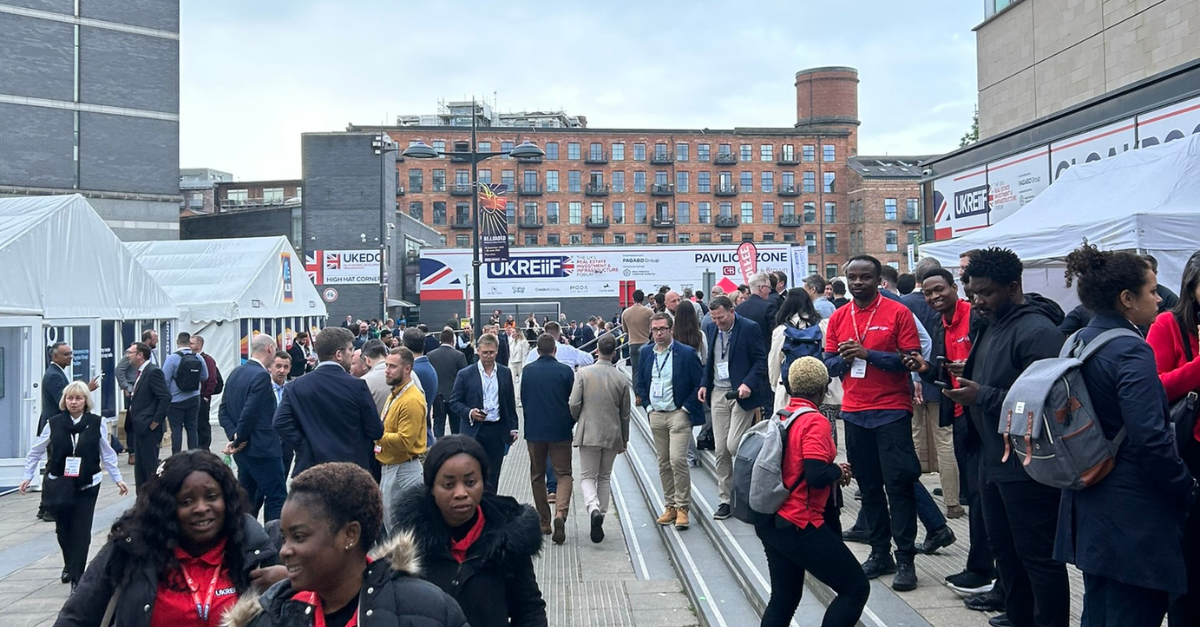
Now preparing for his third visit to UKREiiF, Craig brings a seasoned perspective on what makes the event so valuable.
“This will be my third trip to UKREiiF in Leeds, and I genuinely enjoy the event. It’s a great opportunity to meet a wide range of people, including a few blasts from the past. Hopefully we’ll get less rain this year!”
With a packed agenda ahead, Craig is hopeful for real momentum this year, with more action being taken to address some of the UK’s biggest challenges in development.
“I’m optimistic that we’ll see an even bigger turnout in 2025, with less talk and more tangible action across the country. There’s a growing focus on meaningful ESG, affordable housing, and the regeneration of our town and city centres.
To really move things forward, we need stronger government support, integrating best-value sustainable performance into the planning process, delivering a more effective Building Safety Regulator framework, and unlocking development through accessible funding.”
With Wallace Whittle playing a key role in some of the UK’s most ambitious regeneration schemes, including Birmingham’s £1.9 billion Smithfield development and the multi-phase transformation at Elephant Park in London, Craig is proud to see the firm’s engineering and sustainability strategies at the forefront of shaping future-ready communities.
These projects not only reflect the scale and complexity of the challenges facing urban regeneration today, but also the importance of long-term, performance-led thinking when it comes to sustainability, building safety, and energy efficiency.
Reflecting on this, Craig shared:
“Wallace Whittle is involved in some of the UK’s largest regeneration developments, working alongside our excellent clients, many of which I’m looking forward to seeing in Leeds. I’m proud of our continued efforts to deliver engineering and energy strategies that set the standard, rather than follow it.”
With UKREiiF 2025 set to bring together thousands of professionals across real estate, infrastructure, investment, and sustainability, this year’s event promises another packed agenda. From headline talks and panel debates to regional showcases and informal gatherings. For those attending, whether it’s your first time or a return visit, knowing how to navigate the three days can make all the difference.
As someone who’s experienced it before, Craig offers some practical advice for getting the most out of your time in Leeds:
“My top tip for getting the most out of UKREiiF is to make time for some of the excellent sessions at The Armoury, and don’t miss the fringe events hosted by friends and colleagues, they’re always worth attending, and a personal rule: hold off on the alcohol until the sun is over the yard arm!
I’ll be the one in the blue suit and sunglasses if you happen to spot me.”
Craig will be joined in Leeds by several of our colleagues from across the business, each bringing their own expertise and focus areas to UKREiiF 2025. From sustainability and energy strategy to large-scale regeneration and infrastructure investment.
If you’d like to meet with one of our delegates during the event, whether for a coffee, a conversation, or to explore opportunities for collaboration, feel free to reach out directly.
You can read more about our full delegation and what they’ll be getting involved in at UKREiiF here. We look forward to seeing you in Leeds.


Craig Robertson
Director & Head of Residential
Related Articles
BREEAM V7: The New Era for Sustainable Building and Net Zero Carbon
News
The New Era for Sustainable Building and Net Zero Carbon
BREEAM V7: The New Era for Sustainable Building and Net Zero Carbon
WWith BREEAM Version 7 on the horizon, it brings a refreshed approach to sustainability standards across the built environment.
As part of this rollout, the new BREEAM Residential Manual is set to launch on the 16th April 2025, introducing key updates to criteria, evidence requirements, and a major revamp of how life cycle assessments and embodied carbon are handled.
BREEAM (Building Research Establishment Environmental Assessment Method) is the world’s longest-established method of assessing, rating, and certifying the sustainability of buildings and has been a cornerstone of sustainable building certification since its inception in 1990. Developed by the Building Research Establishment (BRE) in the UK, BREEAM sets the standard for best practice in sustainable design, construction, and operation across a range of building types. The assessment covers key categories such as; Energy, Water, Health & Wellbeing, Materials, Waste, Pollution, Transport, Land Use & Ecology, Managment and Innovation.
By awarding ratings, BREEAM helps developers, designers and building owners benchmark and improve environmental performance, reduce costs, and demonstrate their commitment to sustainability and ESG principles.
Launching in 2025, BREEAM Version 7 realigns BREEAM’s criteria with global best practices and net zero ambitions, placing Whole Life Carbon and energy performance at the center.
This update further strengthens BREEAM’s role in demonstrating genuine sustainability across a building’s lifecycle, from early design to post-construction. It introduces new minimum standards, revised weightings, and a clear emphasis on reducing both operational and embodied emissions. Some of the key changes in BREEAM V7 regarding energy, carbon, and whole life cycle assessments are as follow:
BREEAM V7 aligns with the latest science and global sustainability goals by focusing on reducing emissions across operational, embodied, refrigerant, and transport sources. It’s aimed at supporting the transition away from fossil fuels, streamline the path to net zero and reward projects that demonstrate measurable carbon reductions. There are also new minimum standards for ‘Excellent’ and ‘Outstanding’ ratings, as they now require more comprehensive whole life carbon strategies.
The focus of energy-related credits shifts toward real-world performance outcomes, with increased flexibility in demonstrating compliance, the update introduces new energy performance benchmarks and promotes advanced operational energy modelling to better monitor and minimise energy usage. The new assessment issues include, but are not limited to:
- Ene 02 – Prediction of operational energy and carbon, encouraging early-stage modelling and third-party verification.
- Ene 04 – Low carbon design through emphasising building form optimisation over traditional passive design.
- Ene 07 – Flexible demand response, which is a new issue, modified to include all fixed building systems
- Ene 08 – Installed Controls, another new issue, which recognises smart controls for energy-efficient system operation.
These changes reflect modern decarbonisation strategies, and credits are reweighted to emphasise electrification and operational energy use.
Mat 01 has been completely overhauled to support a robust approach to embodied carbon, introducing three stages of LCA: concept, technical design, and post-construction. Credits are also now awarded based on performance against embodied carbon benchmarks, using BREEAM-recognised tools aligned with EN15978.
There is now also a minimum credit threshold for higher BREEAM ratings to reinforce the growing emphasis on early and accurate carbon reporting.
The ecology credits are now more closely aligned with biodiversity net gain goals, promoting developments that contribute positively to ecological value, with new requirements that promote sustainable site selection practices that minimise environmental impacts. The version 7 update also includes new benchmarks to align with the English Biodiversity Net Gain law and additional methodologies.
- Pol 01 considers the impact of refrigerants, and the criteria now mandates that all refrigerant gases have zero ozone depletion potential as a prerequisite, which highlights the importance of reducing direct greenhouse gas emissions from building operations.
- Pol 02 refers to local air quality, and within this update, more credits can be achieved for building with no onsite combustion, which further encourages a shift away from fossil fuel-based heating and cooling systems.
Version 7 also introduces a consistent methodology across schemes, such as New Construction, In-Use, Refurbishment & Fit Outs, therefore improving the alignment of metrics and rating boundaries. The latest version will also extend Whole Life Carbon coverage to additional areas, such as water consumption. This more holistic approach will help to close the performance gap, ensuring users are empowered to drive measurable sustainability outcomes across an asset’s full lifecycle.
- Wat 01 means that the water consumption calculator has been simplified, with benchmarks now based on water consumption figures. This revised scoring scale now recognises recycled water use, in turn, promoting better water management practices
This more holistic approach helps close the performance gap and empowers users to drive measurable sustainability outcomes across an asset’s full lifecycle.
Version 7 introduces key enhancements to the Health & Wellbeing category, with a stronger focus on occupant comfort and long-term wellbeing. New credits have been introduced that address advanced lighting controls and the non-visual effects of light, in turn supporting circadian rhythms and promoting healthier indoor environments.
Notably, Hea 01 Visual Comfort has been restructured to cover key elements such as glare control, daylight access, exposure to direct sunlight, and quality of views to the outside, all of which are increasingly linked to mental and physical wellbeing.
This section also includes updated considerations for indoor air quality and acoustic performance, aligning with industry-wide recognition that occupant health is becoming a core priority, not only for those using the space, but also for investors and developers aiming to futureproof their assets.
At Wallace Whittle, our growing ESG team integrates wellbeing strategies early in the design process, balancing occupant health with broader sustainability, energy performance, and building efficiency goals.
BREEAM Version 7 signals a clear strategic pivot toward decarbonisation, circularity, and performance-based outcomes. By embedding whole life carbon across the core assessment framework, V7 is positioned to be a key enabler for delivering net zero carbon buildings in practice, and not just intent.
Early-stage modelling and robust data collection are now not only encouraged, but essential to achieving top-tier BREEAM ratings. The shift in weightings and minimum standards also raises the bar. The reconfiguration of credits emphasises BREEAM’s increasing alignment with other industry accreditations like NABERS UK, also improves the interoperability and long-term tracking of carbon performance across an asset’s lifecycle.
BREEAM Version 7 represents a step towards a more holistic and performance-based assessment of buildings, and as we approach the official launch of the new Residential Manual on 16 April 2025, now is the time to assess how your upcoming projects align with these changes. Whether you’re preparing for registration or evaluating your route to certification, our Sustainability Team at Wallace Whittle is here to help you navigate BREEAM V7
Visit the BRE website for more on BREEAM V7
Have questions or ready to get started? Email our Sustainability Team at [email protected] to talk through your project.

Lucy Thomson
Principal Sustainability Consultant
Related Articles
Wallace Whittle at UKREiiF 2025
News
WWe are heading to Leeds for UKREiiF 2025
WWill we see you there?
Hosted by the UK Real Estate Investment and Infrastructure Forum (UKREIIF), the upcoming event stands as a pivotal platform where industry leaders, innovators, and stakeholders converge to exchange insights and explore collaborative opportunities shaping the future of renewable energy and infrastructure investment.
Set amidst the vibrant heart of Leeds, from Tuesday 20th May to Thursday 22nd May, this annual gathering promises an engaging agenda. From keynote addresses to panel discussions, workshops, and networking sessions, it will encourage meaningful dialogue and drive actionable outcomes within the sector. With a keen focus on the latest trends, innovations, and investment strategies, we aim to gather invaluable knowledge and forge further strategic partnerships in this evolving landscape.
Our delegates, ready to contribute their expertise and perspectives, will engage in key discussions covering sustainability, market dynamics, regulatory frameworks, and emerging technologies within renewable energy and infrastructure. But it’s more than just showcasing what we know – it’s about learning, collaborating, and growing together. Whether we’re sharing insights, brainstorming solutions, or simply swapping stories over coffee, we’re eager to meet with current and new connections.
We’re looking forward to the event, eager to catch up with many of our valued clients and collaborators, and explore new opportunities.
If you’d like to arrange a meeting over coffee or a drink, please reach out to our attendees below.
ESG & Sustainability

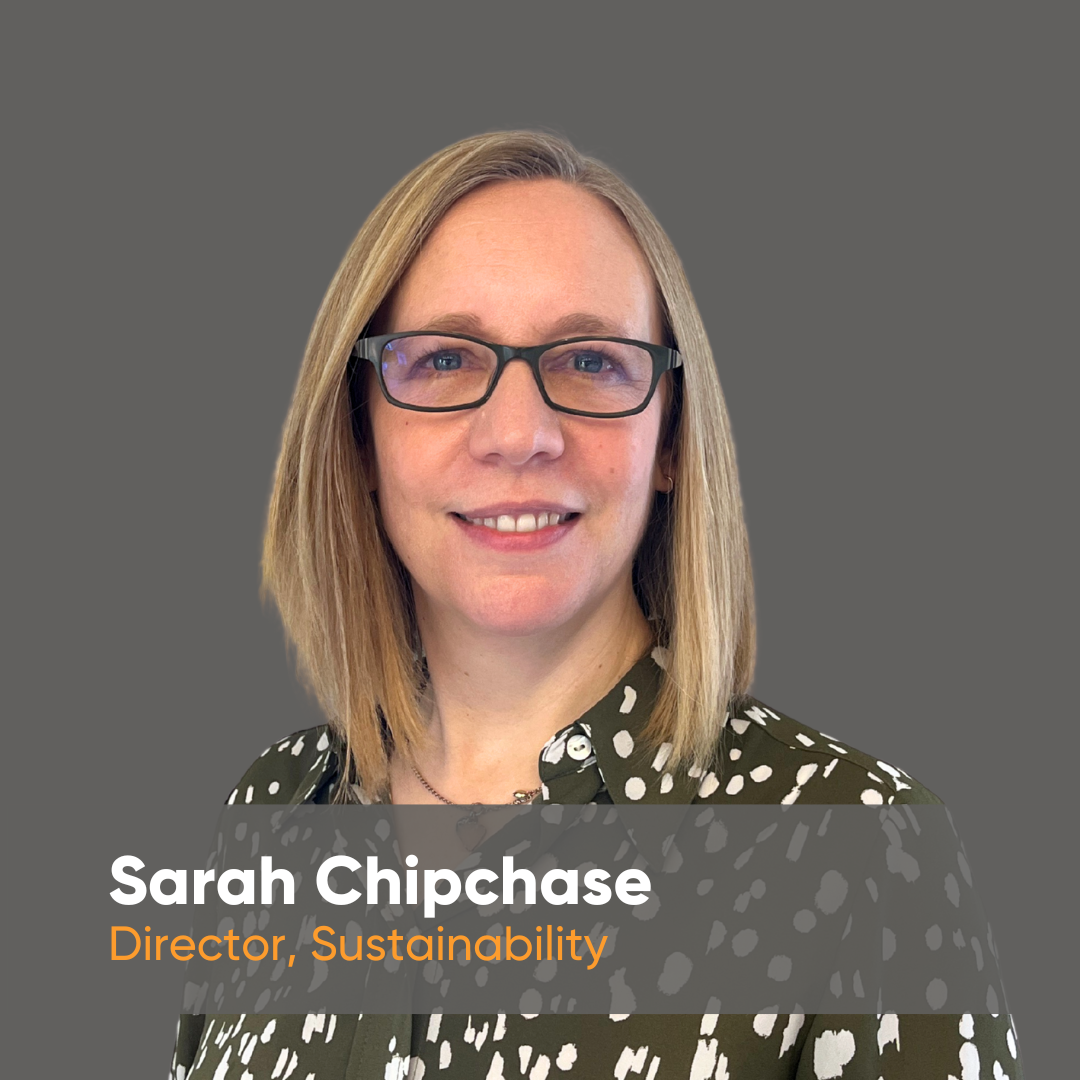
Nick Hayes, Head of ESG & Sustainability – [email protected]
Connect with Nick on LinkedIn.
Sarah Chipchase, Director Sustainability – [email protected]
England



Craig Robertson, Director England and Head of Residential – [email protected]
Connect with Craig on LinkedIn.
Paul Dean, Director, Manchester – [email protected]
Connect with Paul on LinkedIn.
Darren Wright, Director, Birmingham – [email protected]
Scotland



Barry McKeane, Director Glasgow – [email protected]
Connect with Barry on LinkedIn.
Stephen Osborne, Director Edinburgh- [email protected]
Connect with Stephen on LinkedIn.
Steven Dunn, Director Scotland – [email protected]
